One of the most interesting plants out there is Algae. Now, algae lacks roots, stems, and leaves. They are known as thallophytes.
Algae live in both fresh and salt waters. You can find algae in streams, lakes, ponds, and warm springs. They also hang from cataracts and cliffs.
Algae are producers which means that they produce organic material by using sunlight, carbon dioxide, and water.
Fish and other aquatic animals love eating algae. But they are not the only ones who love eating algae: humans do too.
Algae Introduction
There are two groups of Algae: Microalgae and Macroalgae
Microalgae is a one cell algae. They are unicellular. Examples of microalgae are spirulina and chlorella.
Macroalgae are multicellular algae and form real plants.
Now macroalgae are really cool because they have air-bladders which help them to rise to the surface to get sunlight.
3 Groups of Algae
Green Algae:
Live both in salt water and freshwater. They live just above flood line. They thrive in nutrient-rich waters.
Brown Algae:
Thrive in saltwater. Only a few species are found in freshwater. Examples are the Giant Kelp.
Red Algae:
These algae are black/red, purple, and soft pink. The color is determined by the amount of pigmentation in the seaweed. Now, the interesting thing is that red algae has green pigmentation but red pigments are dominate. Most red algae are found in salt water. They absorb blue light from the sunlight. Red algae does well in deeper waters. Red algae also grows slower than brown algae and green algae. There is a large amount of red algae in Asia. Sushi known as nori which is greenish/brown when you buy it at the store but this is the result of drying and roasting nori which changes the color.
Chlorophyll
Chlorophyll is the green color we see in plants and algae. Chlorophyll is what lets plants absorb energy from light.
You and I can actually intake chlorophyll.
One of our dear friends actually introduced us to liquid chlorophyll. I was so surprised by how much energy this drink gave me. We were spending the night at their house and I was given it at 11pm which is such a bad idea. I could not fall asleep. I had so much energy.
This drink has a slightly minty flavor. All you have to do is add two tablespoons of liquid chlorophyll in an 8 oz. glass of cold water daily.
Now liquid chlorophyll not only gives you vibrational energy but it also reduces odor and bad breath. My teenagers are dr’inking it for this reason.
It cleanses your blood and helps your blood carry oxygen to your cells.
It also binds up the toxic pesticides and excretes it from your body.
Here is a science experiment that you could do with your child/children to see how plants have different chlorophyll pigmentation.
You’ll first need to collect a variety of plants. Cut them up and place them in a glass jar. Add rubbing alcohol and the cut up plants to the jar. Label the jars. Place the glass jars that have the cut up plants and rubbing alcohol into a large glass dish and pour boiling water into the glass dish and not the jars. We repeated this process a few times throughout the day and then left it to sit overnight. The next morning we cut up strips of paper and placed them into the rubbing alcohol and plant solution. Grass had the darkest chlorophyll pigment for us.
If your interested in the Chlorophyll click HERE.
Chlorine and Algae:
Any body of water that is left sitting will most likely grow algae because algae spores enter the pool in many different ways: wind, rain, and swimsuits that are contaminated. Now in order for algae to survive it needs food and who would have thought that a speck of dust brought by the wind can be food for algae? All swimming pools have algae present. The percentage is so small that it can not be seen. As soon as the chlorine level dips and the pH rises algae will start to bloom. That is why swimming pools put chlorine in the water to kill bacteria and keep the algae from getting out of control.
Algae need sunlight, water, chlorophyll, and carbon dioxide to grow.
All you’ll need is powdered organic spirulina and Clorox. Mix a spoon of spirulina with 1/2 cup of water. Place the same amount of spirulina in each bottle. Leave one bottle with just spirulina. To the next bottle just add a little bit or Clorox. With each bottle increase the amount of Clorox. It really doesn’t take too much Clorox to turn the spirulina white and kill the algae.
Eating Algae
That’s right, you can enjoy algae and it has been said that algae or seaweed has magical healing properties.
Esther always makes smoothie bowls using spirulina. But we decided to make popsicles instead.
What you’ll need:
2 cups of coconut or almond milk
2 bananas
1 teaspoon of spirulina powder.
2 cups of strawberries
In a blender add the milk, banana, and spirulina.
Get soft strawberries and mush them together. Keep strawberry separate. If you want to add sugar or cinnamon you can add some sugar here.
Place the milk mixture first and then add the strawberry in silicone ice-pop molds. Place in the freezer for 4 to 6 hours. Enjoy.
Thank you for reading our blog post. We share a new blog post every Tuesday and Thursday at 8pm.

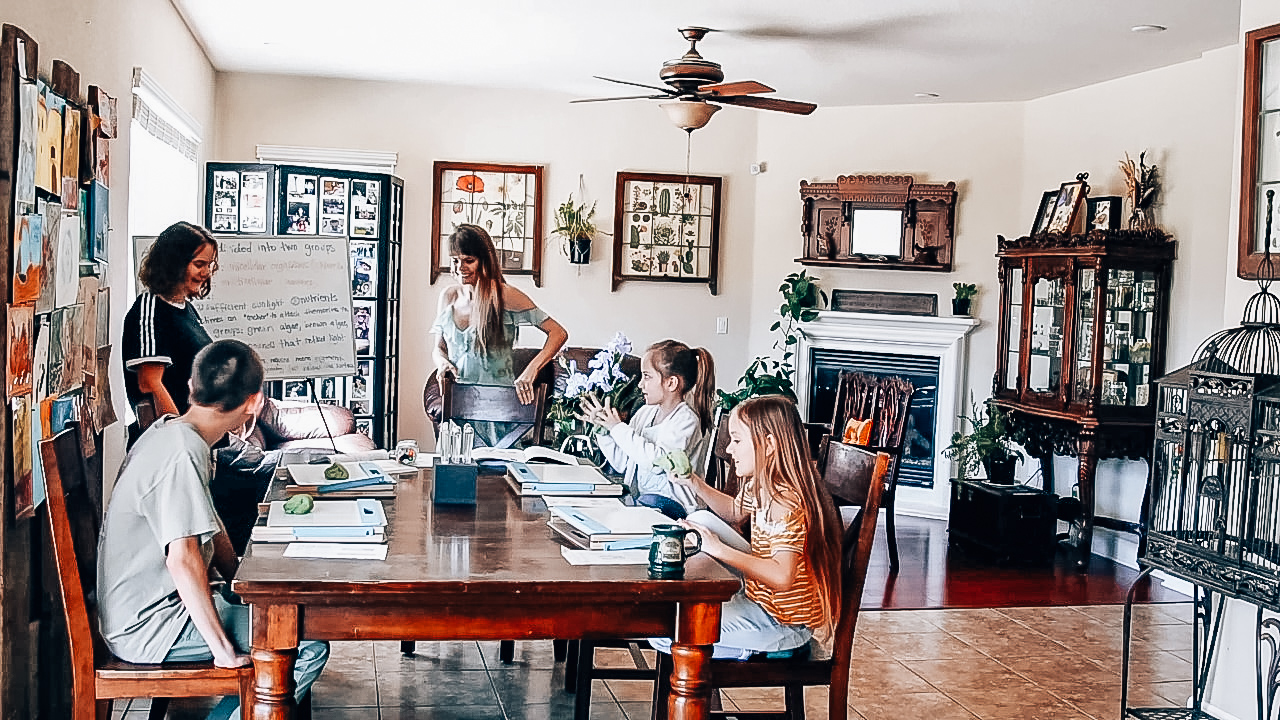
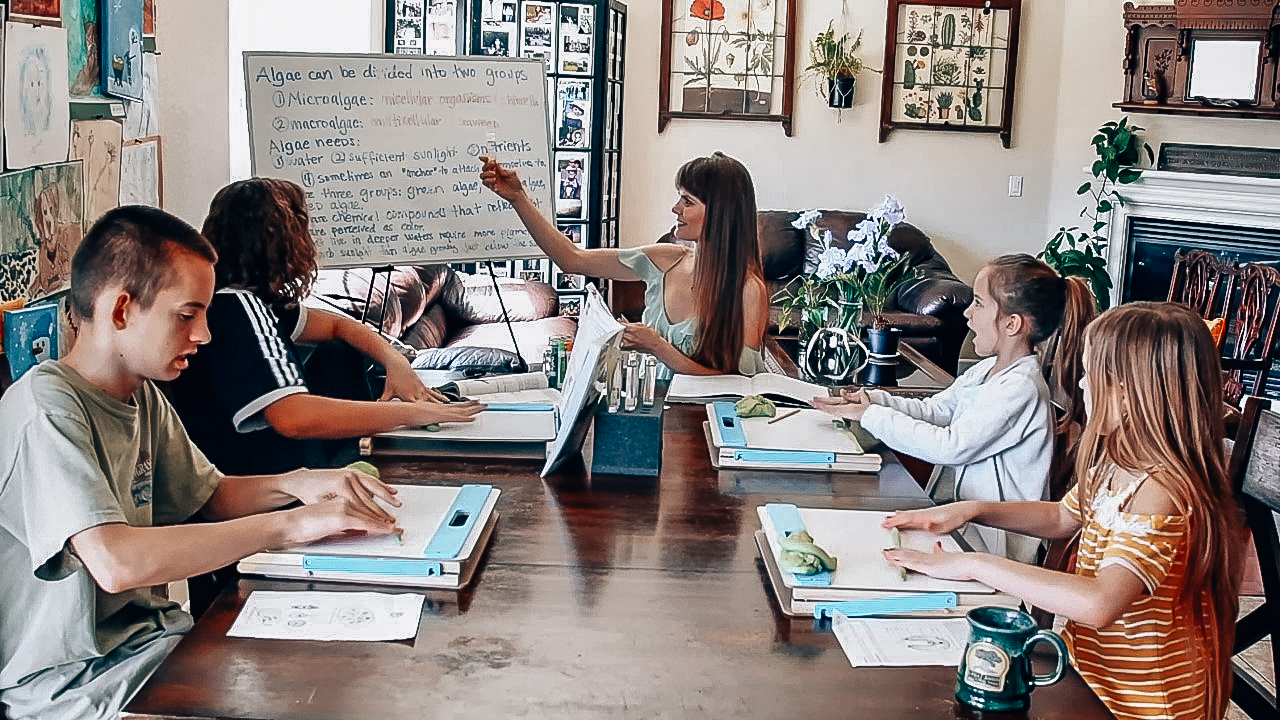
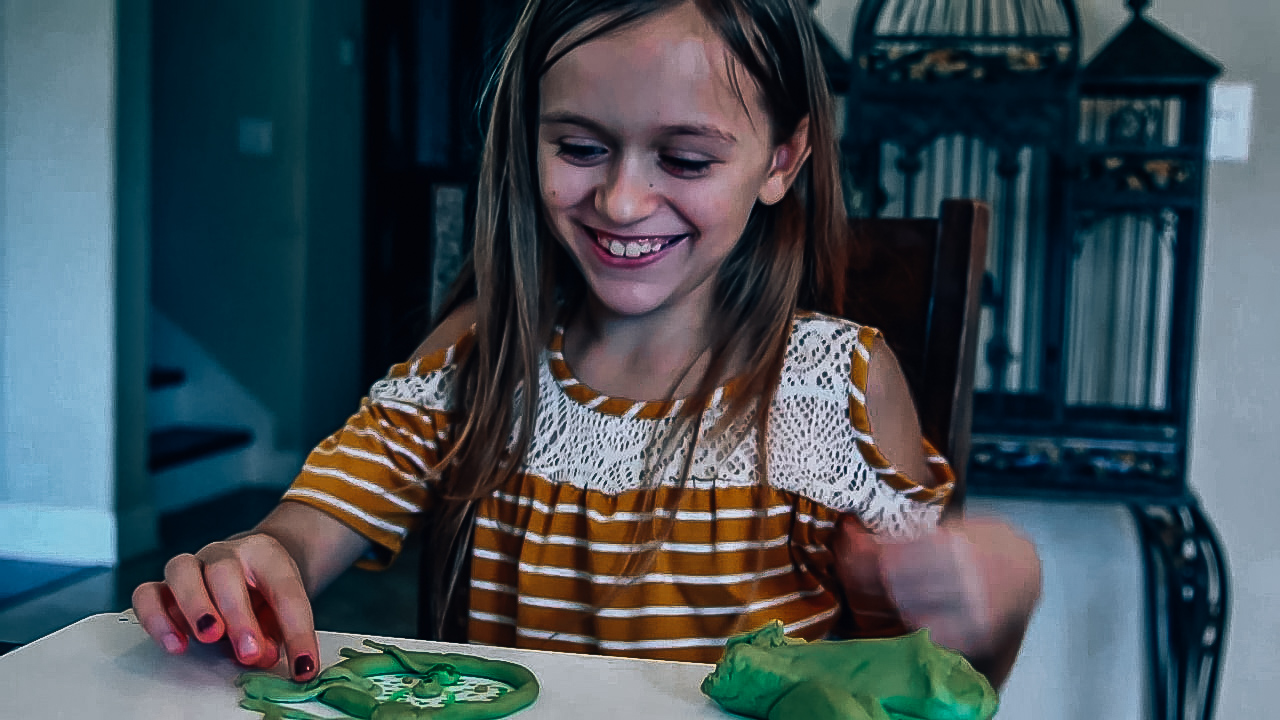
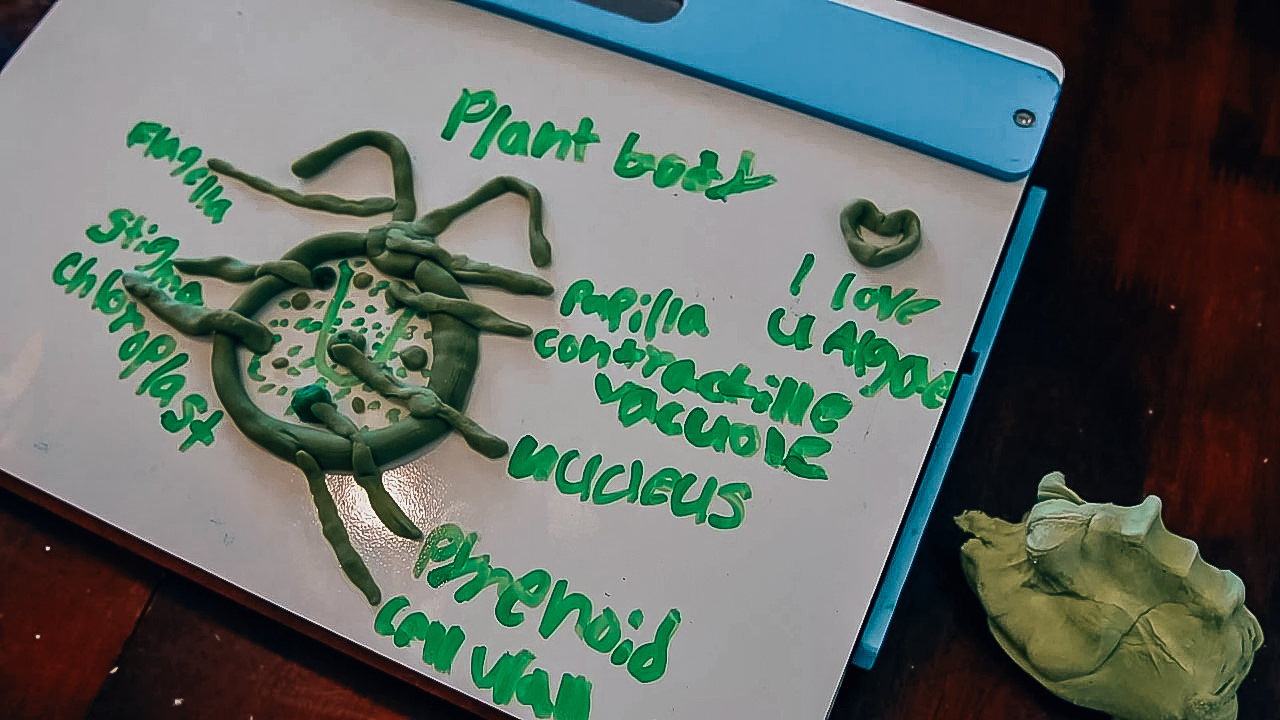
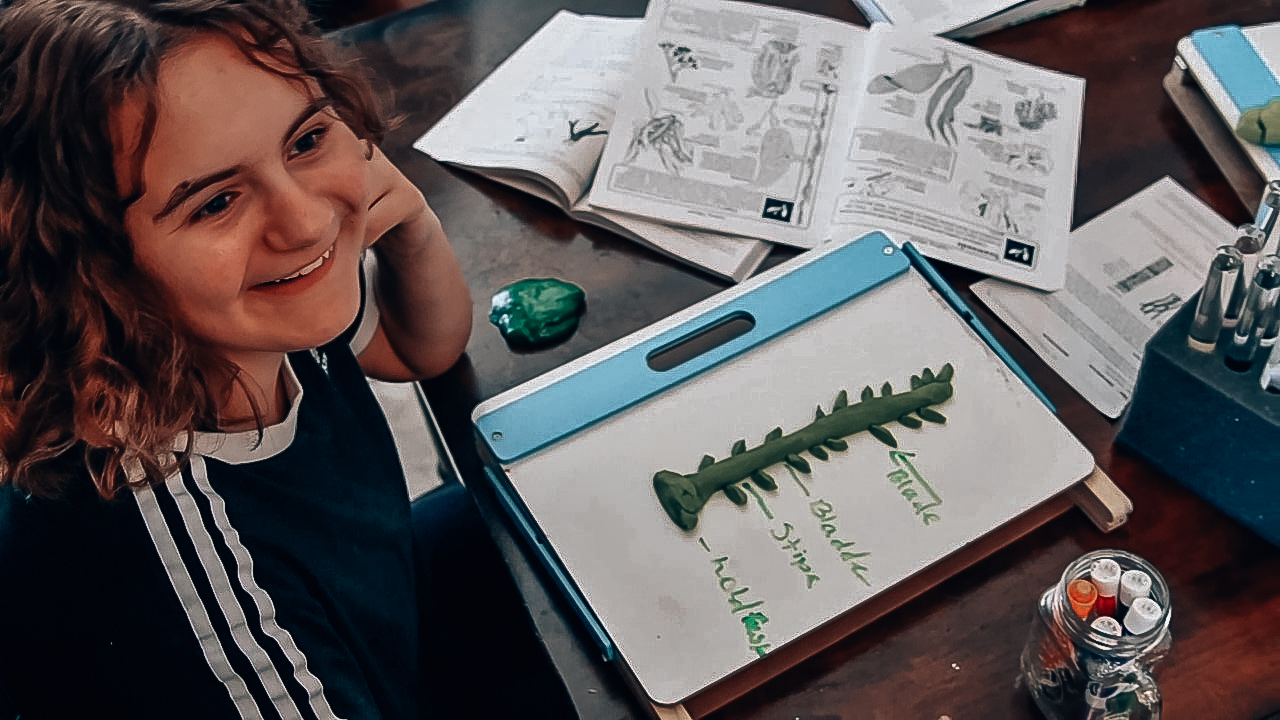
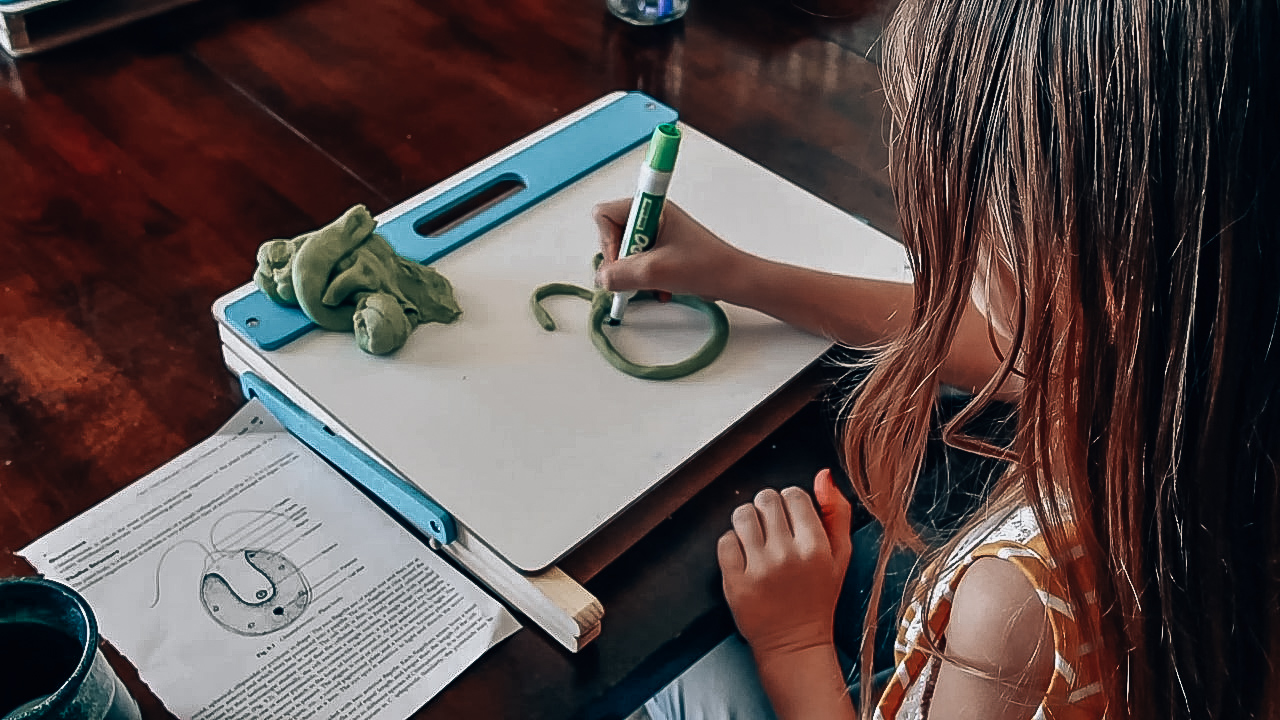
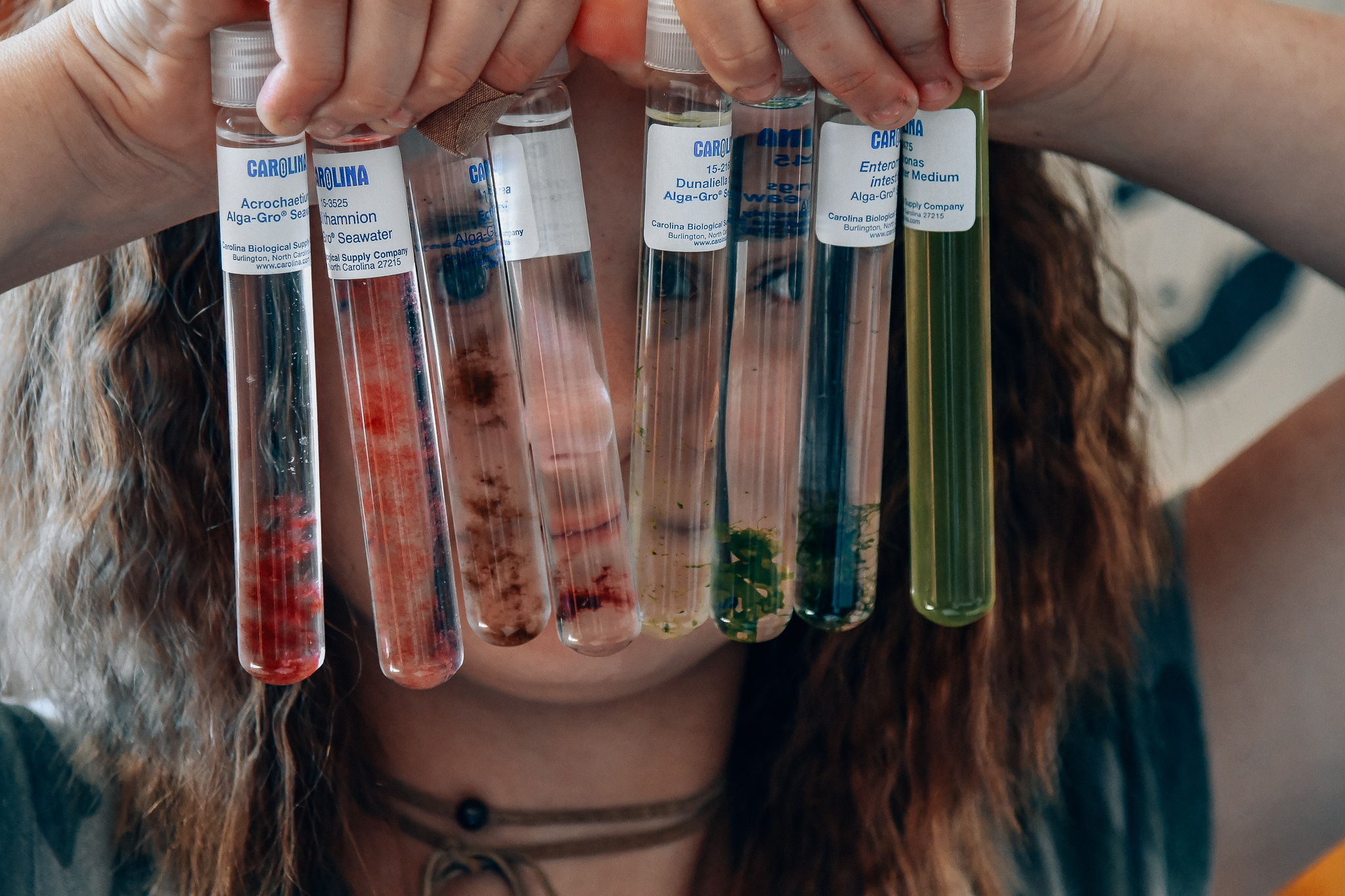
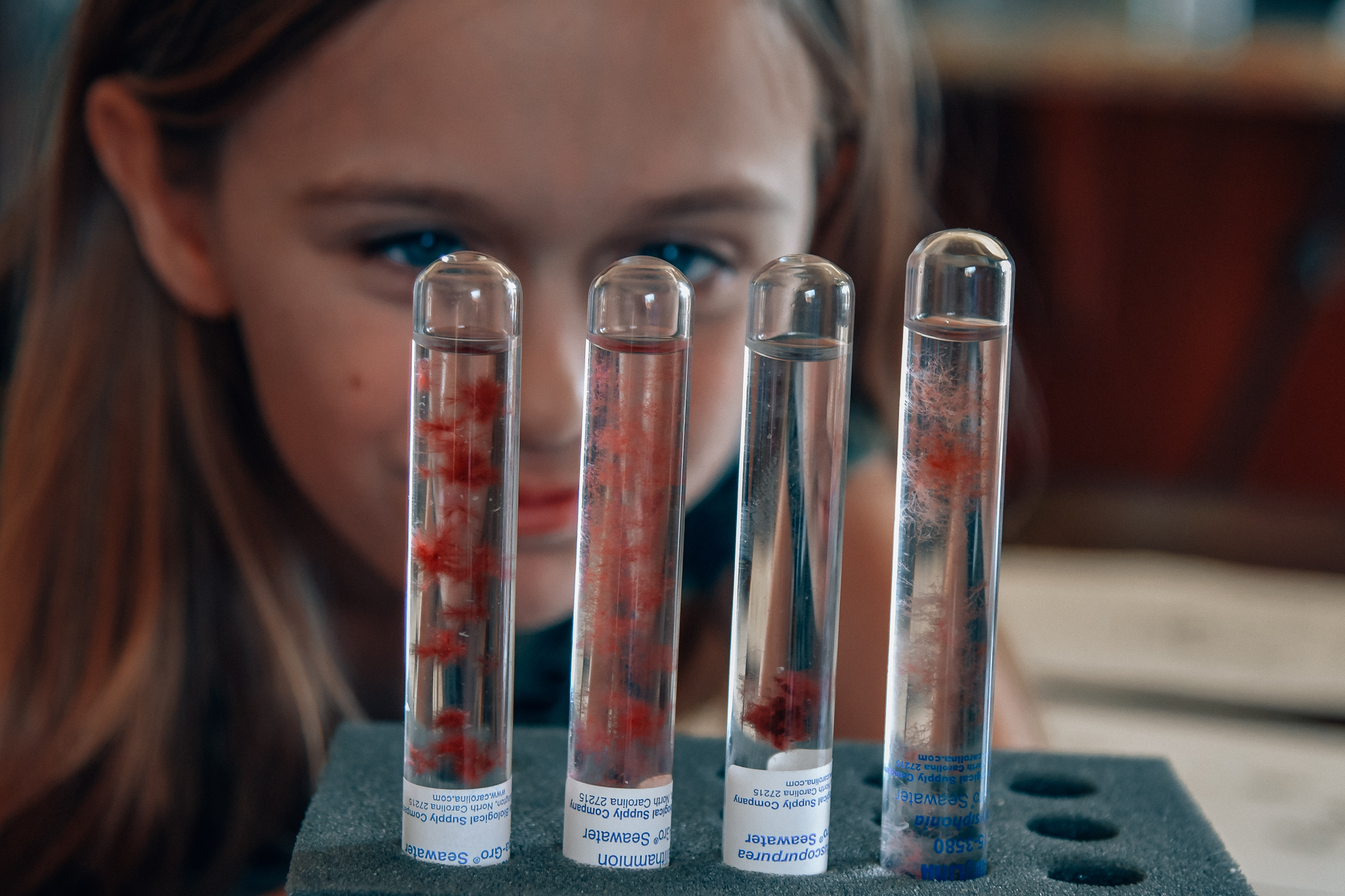
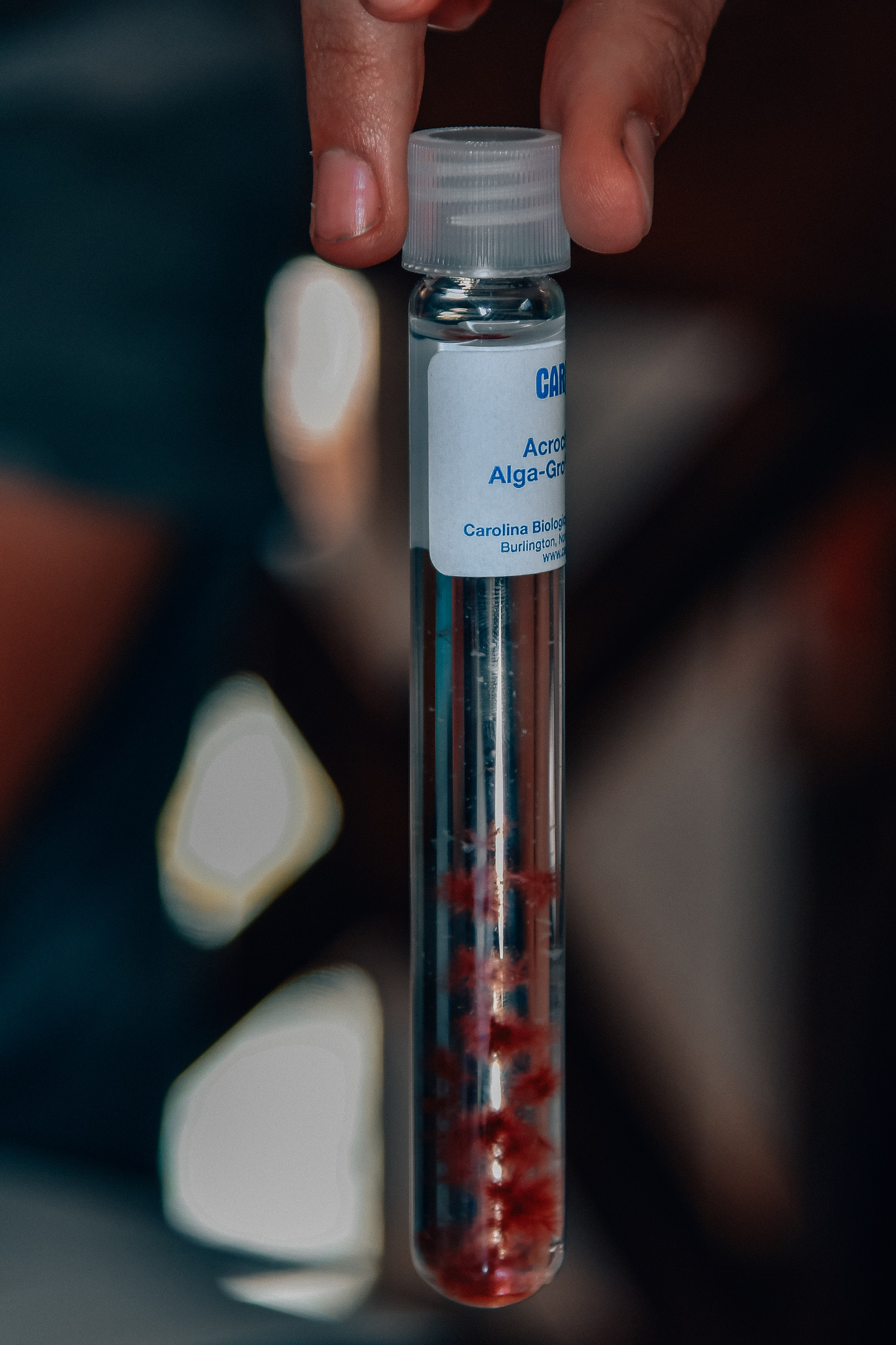
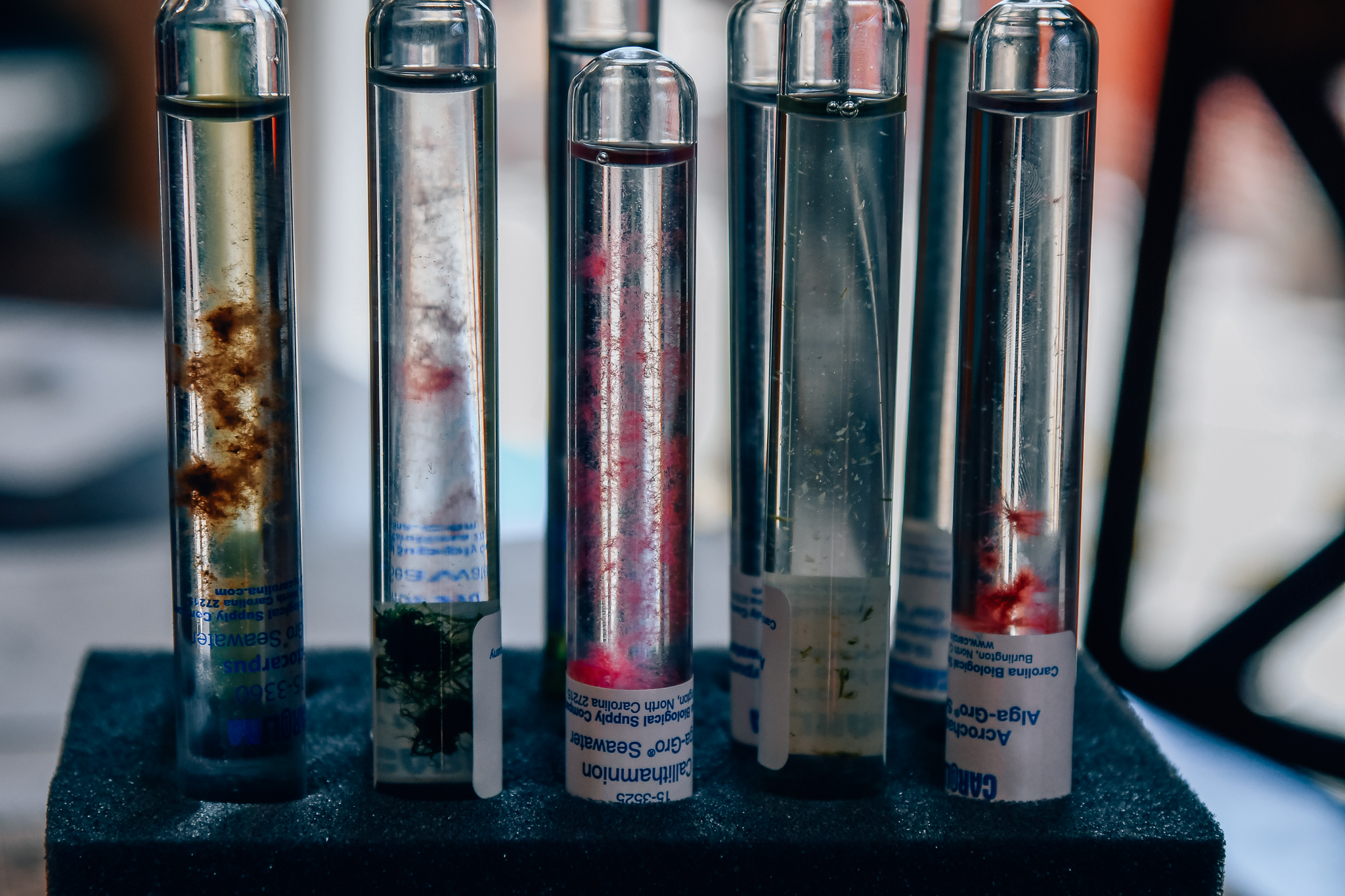
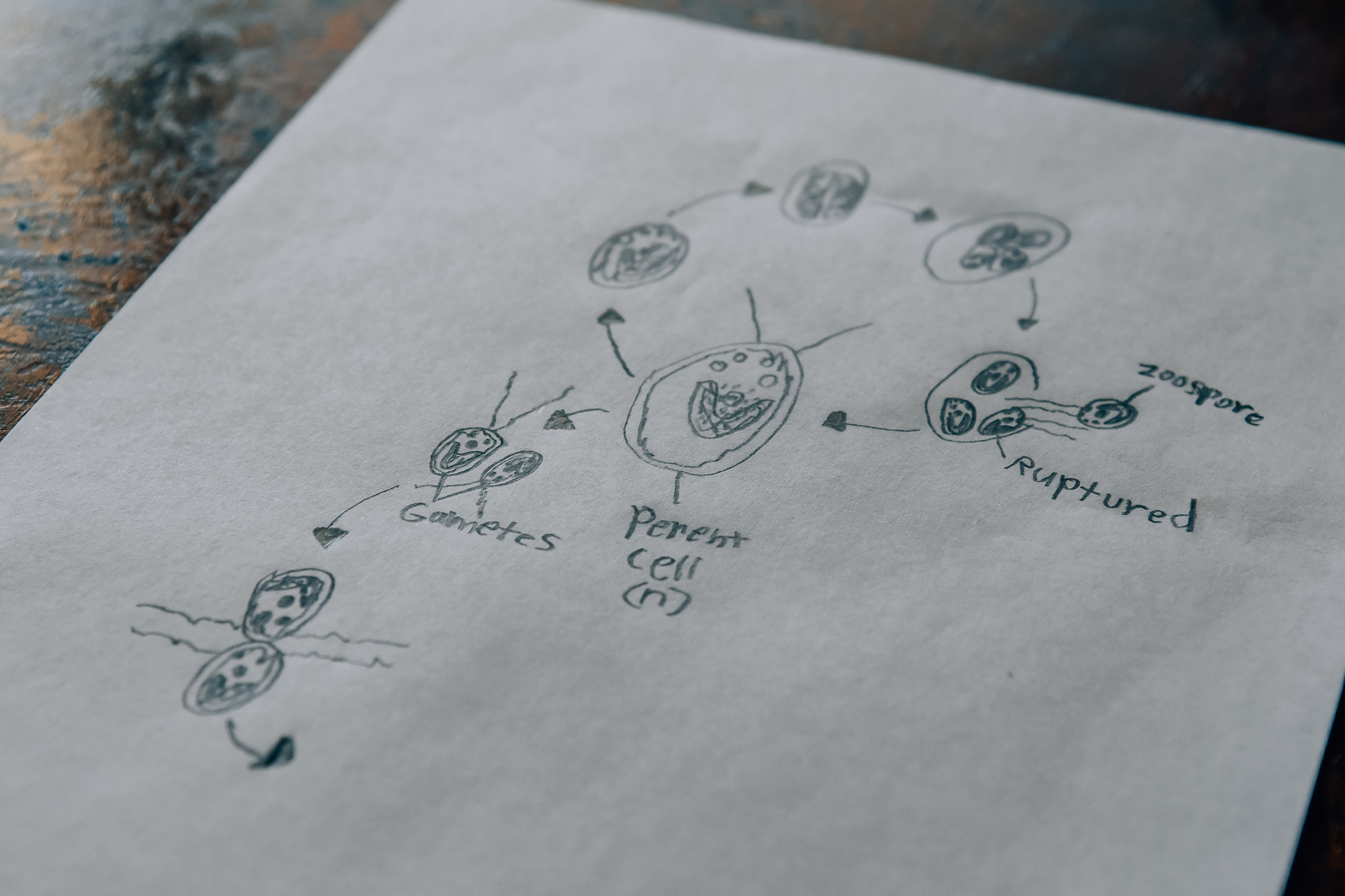
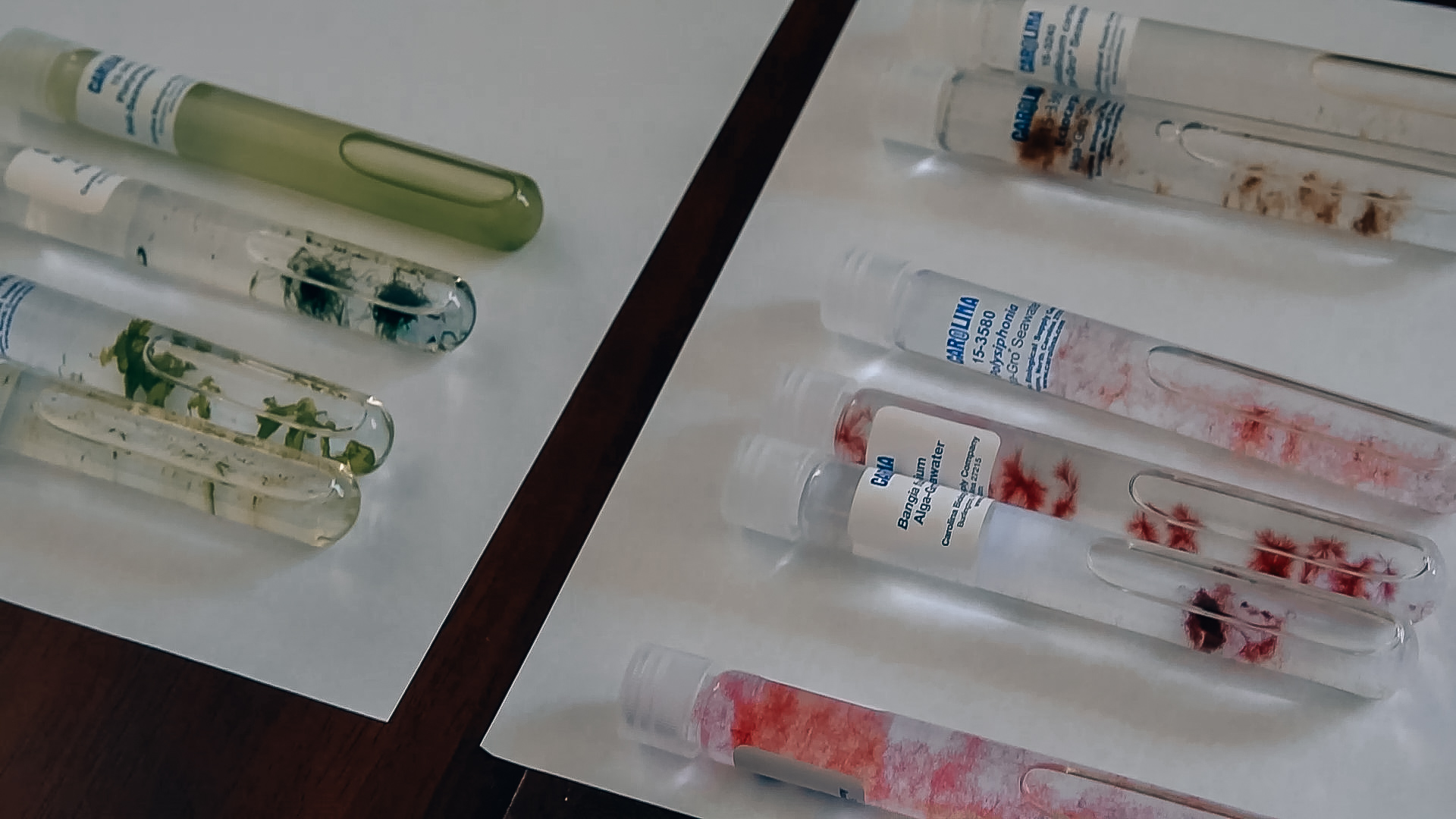
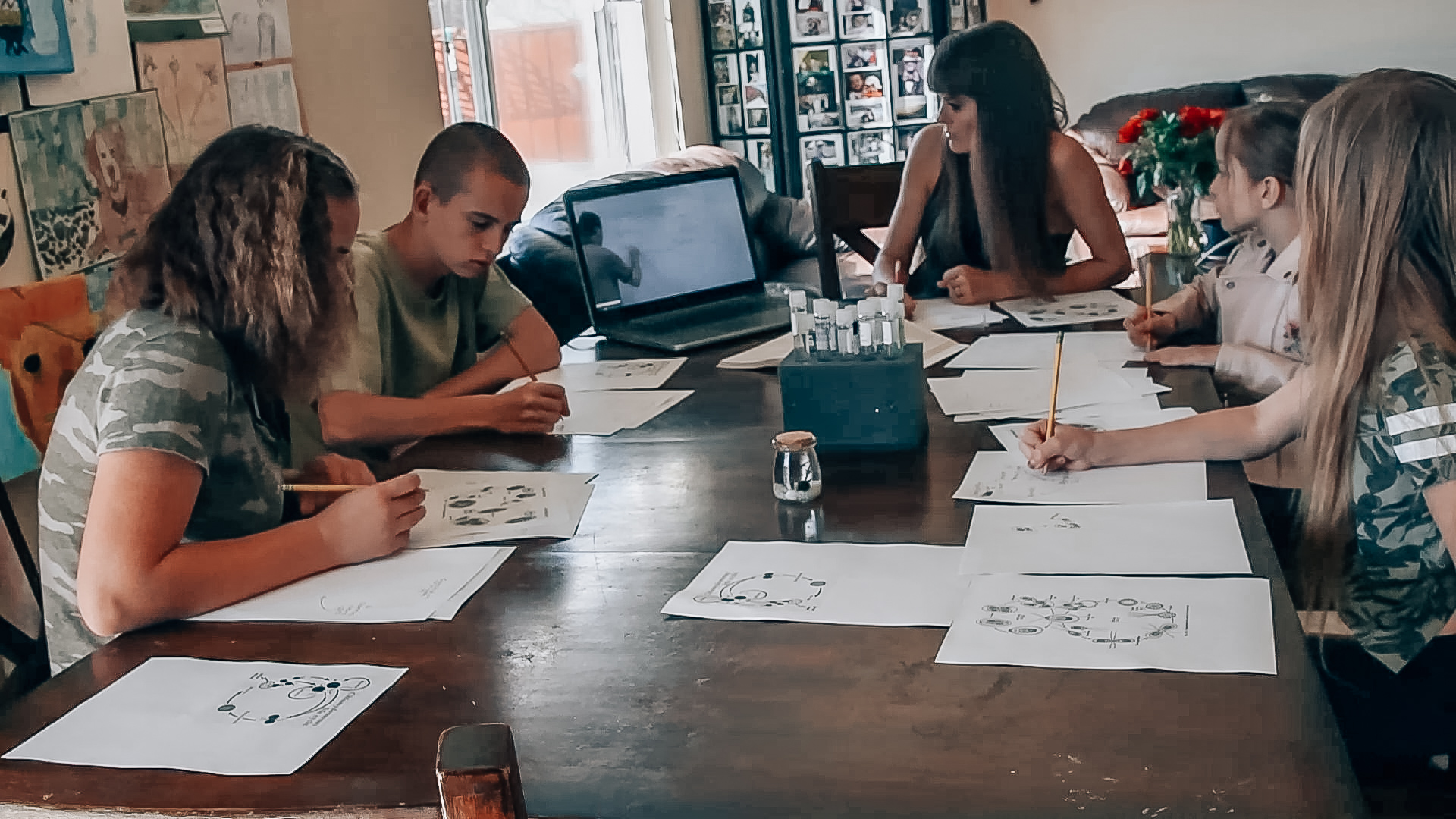
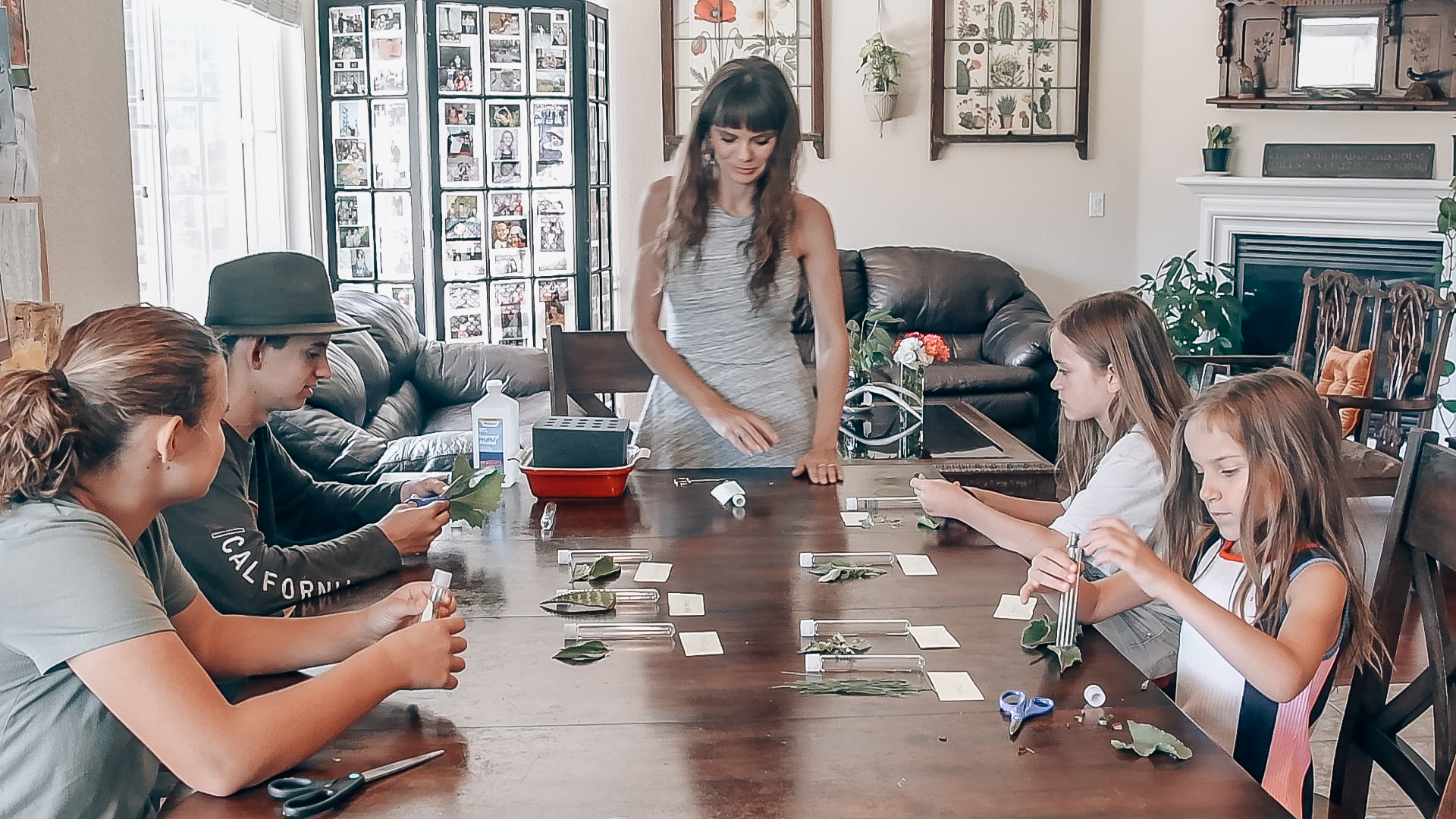
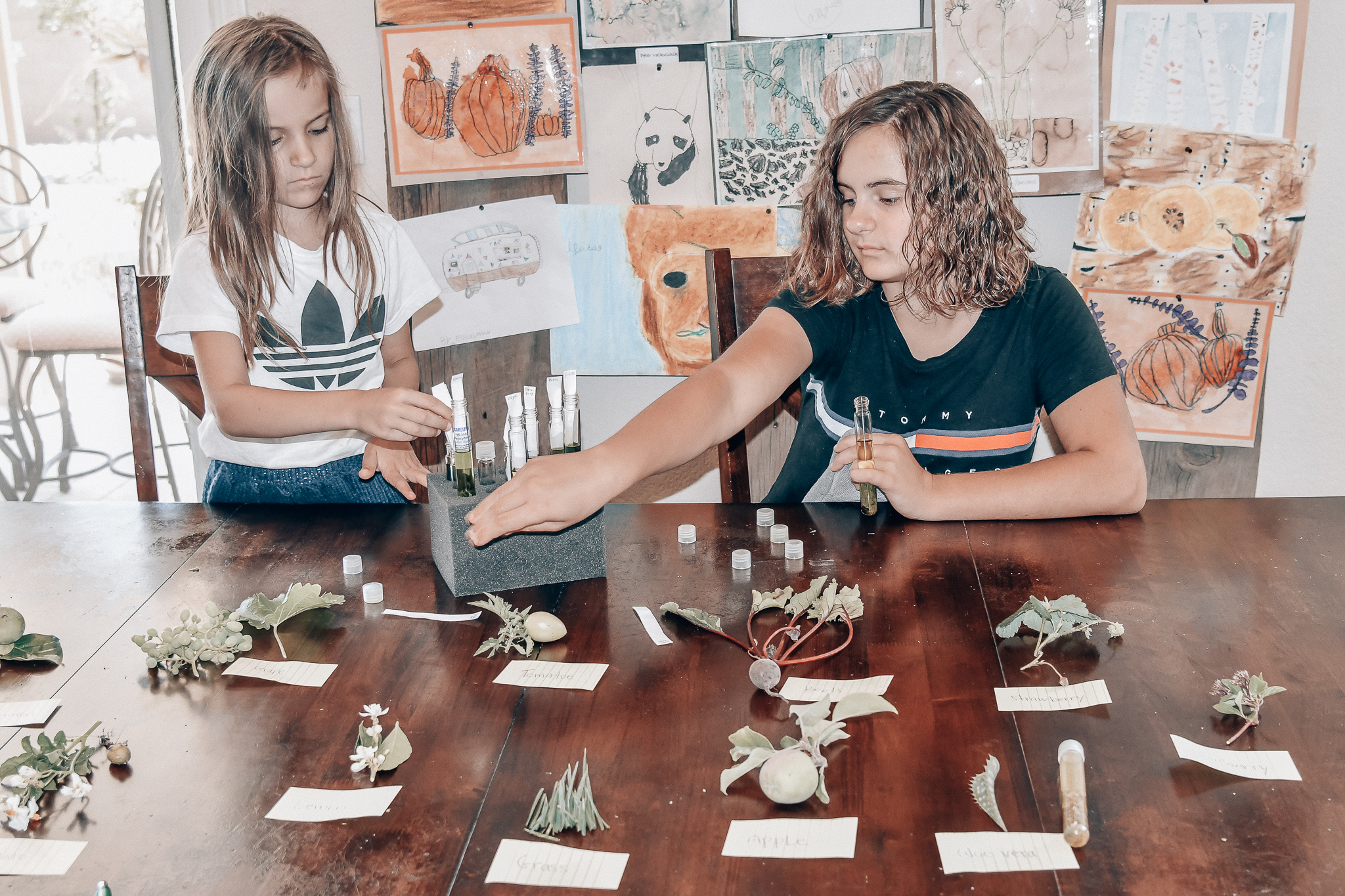
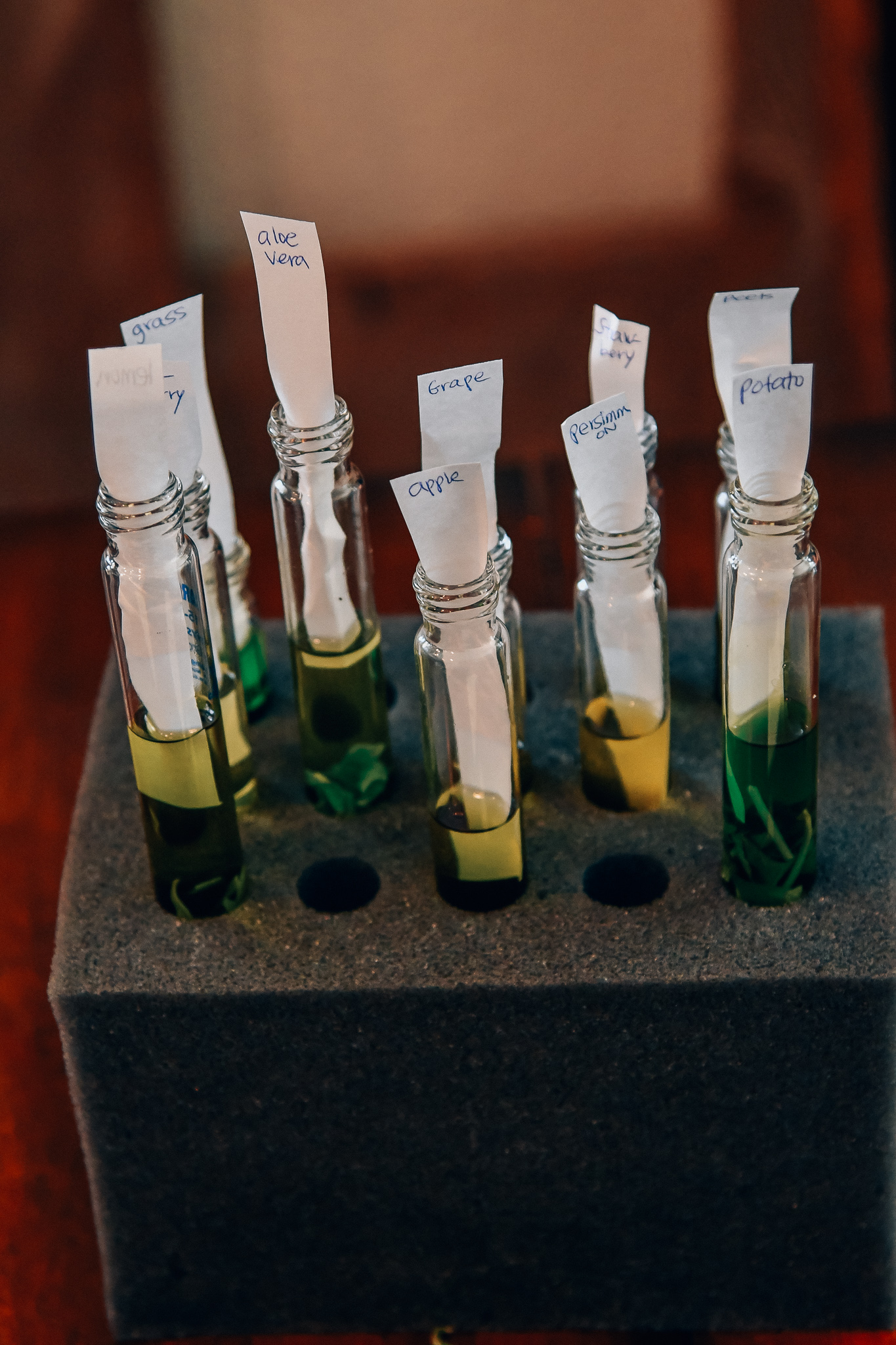
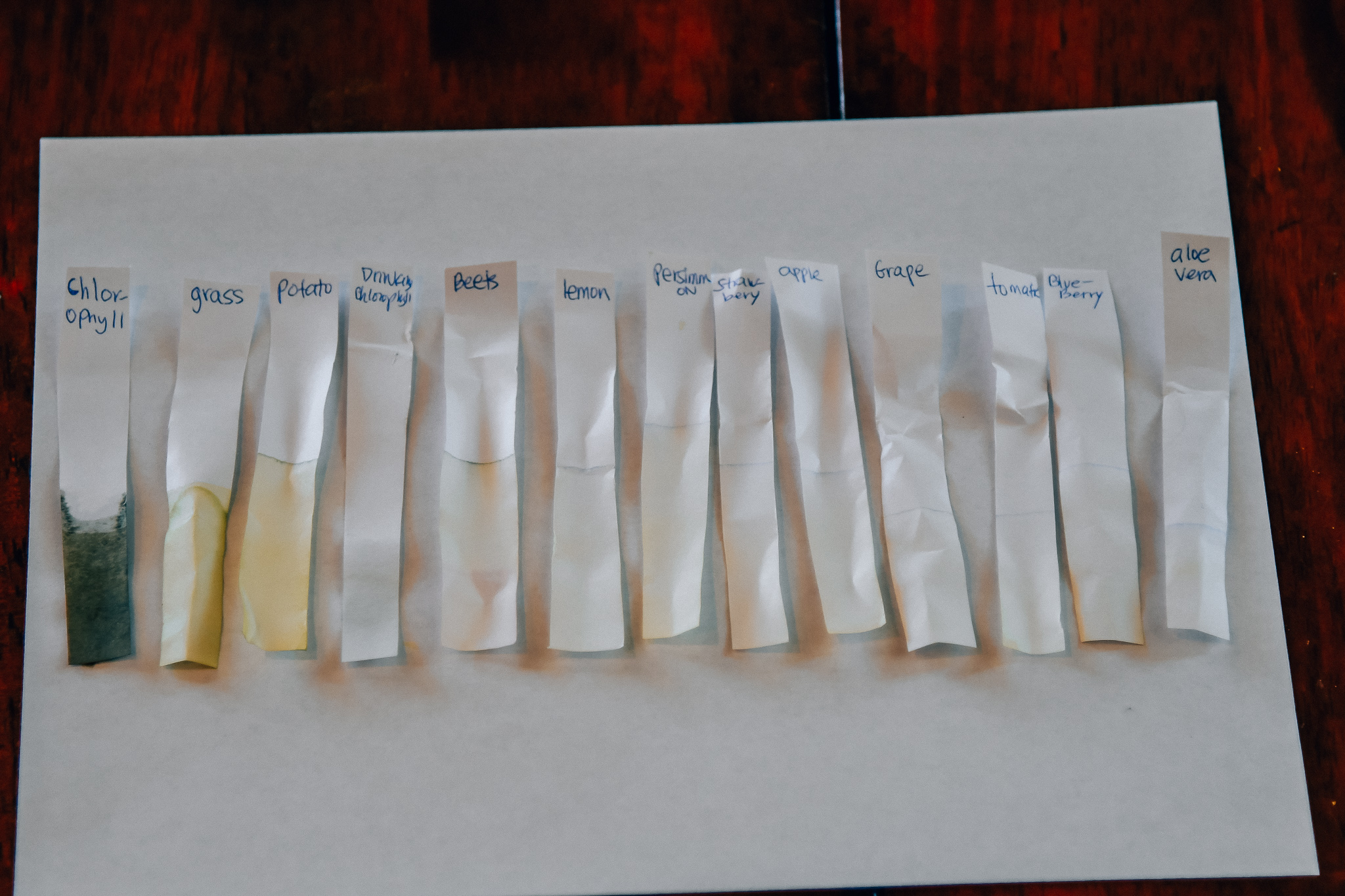
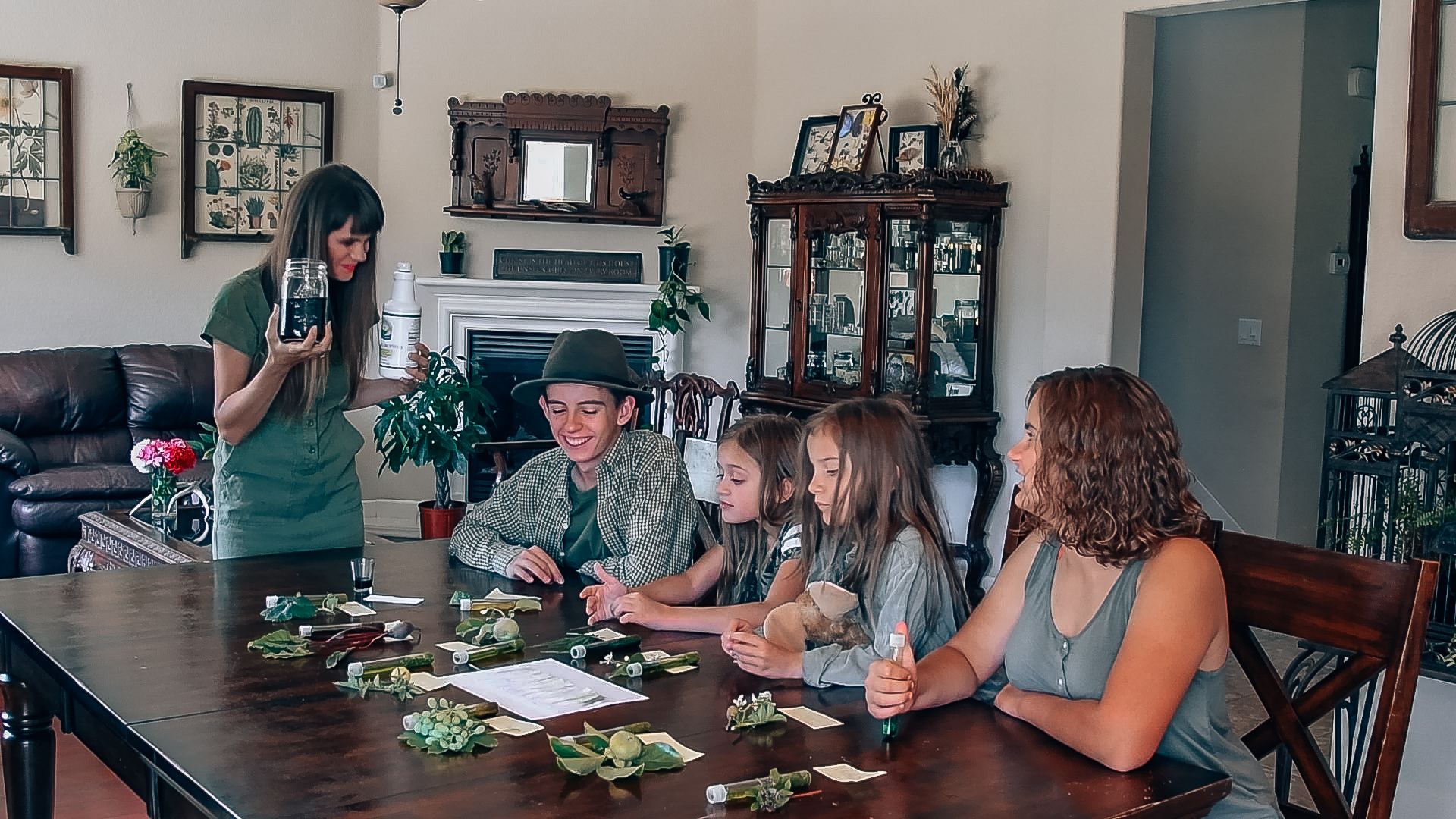
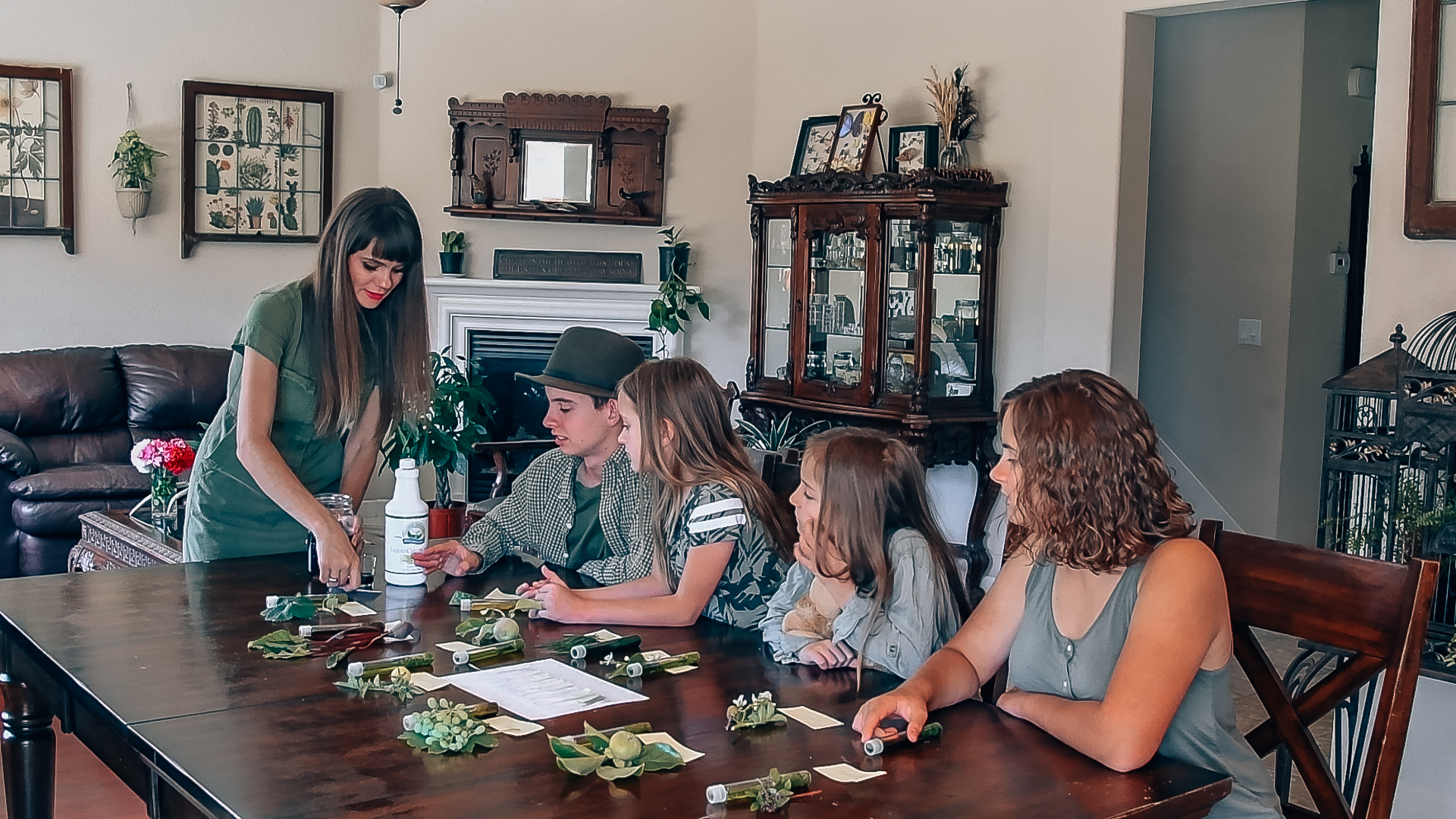
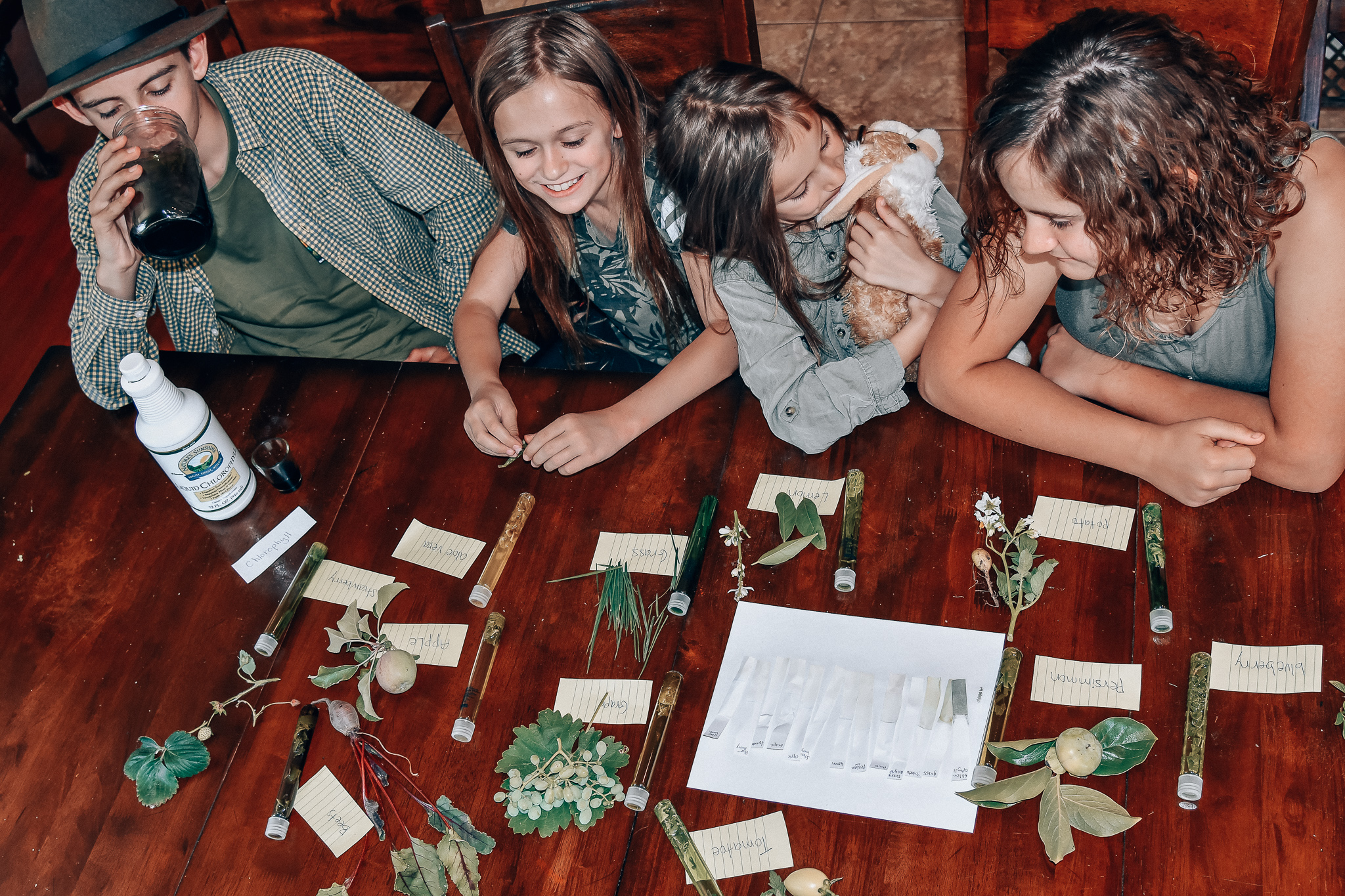
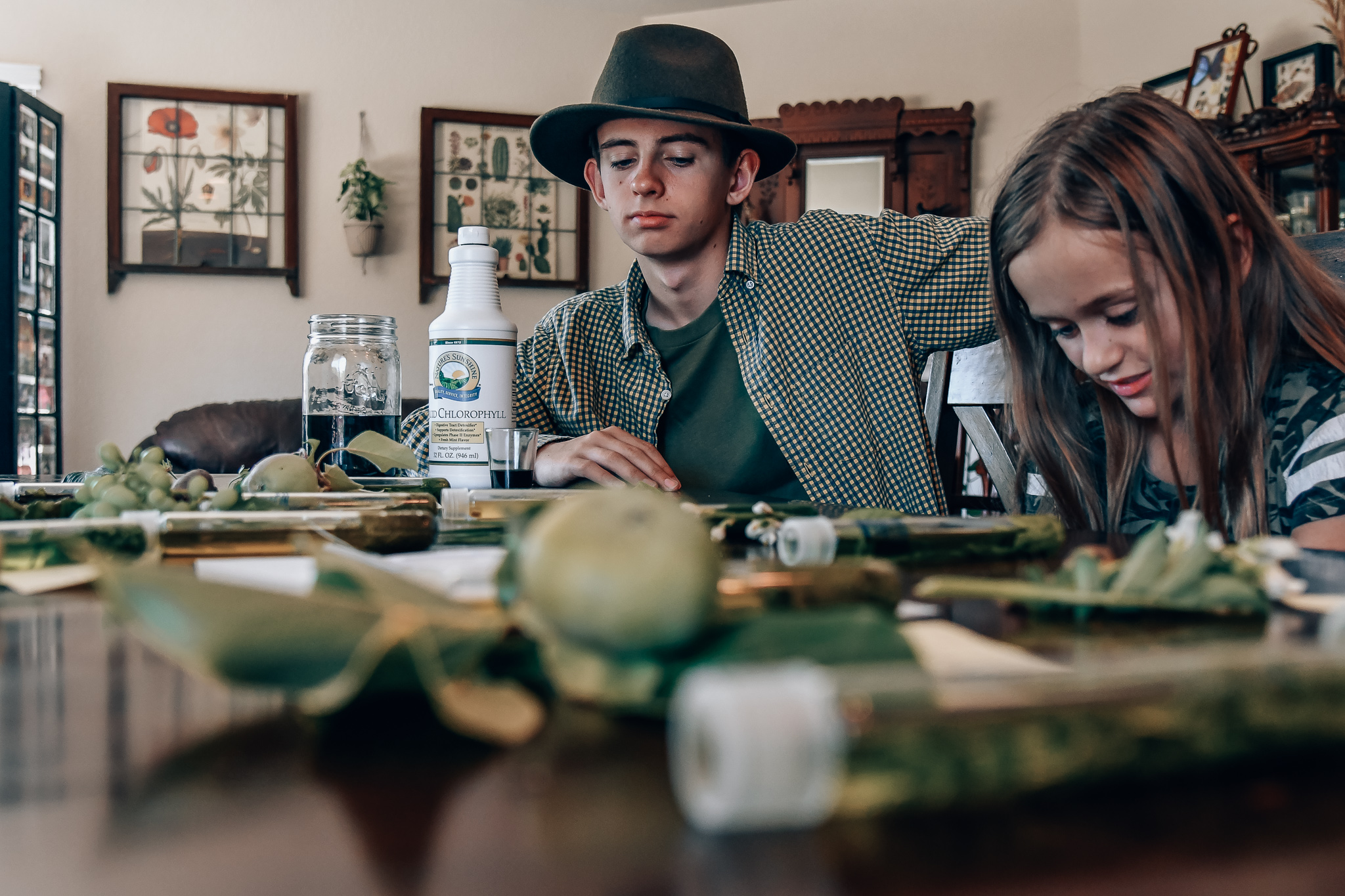
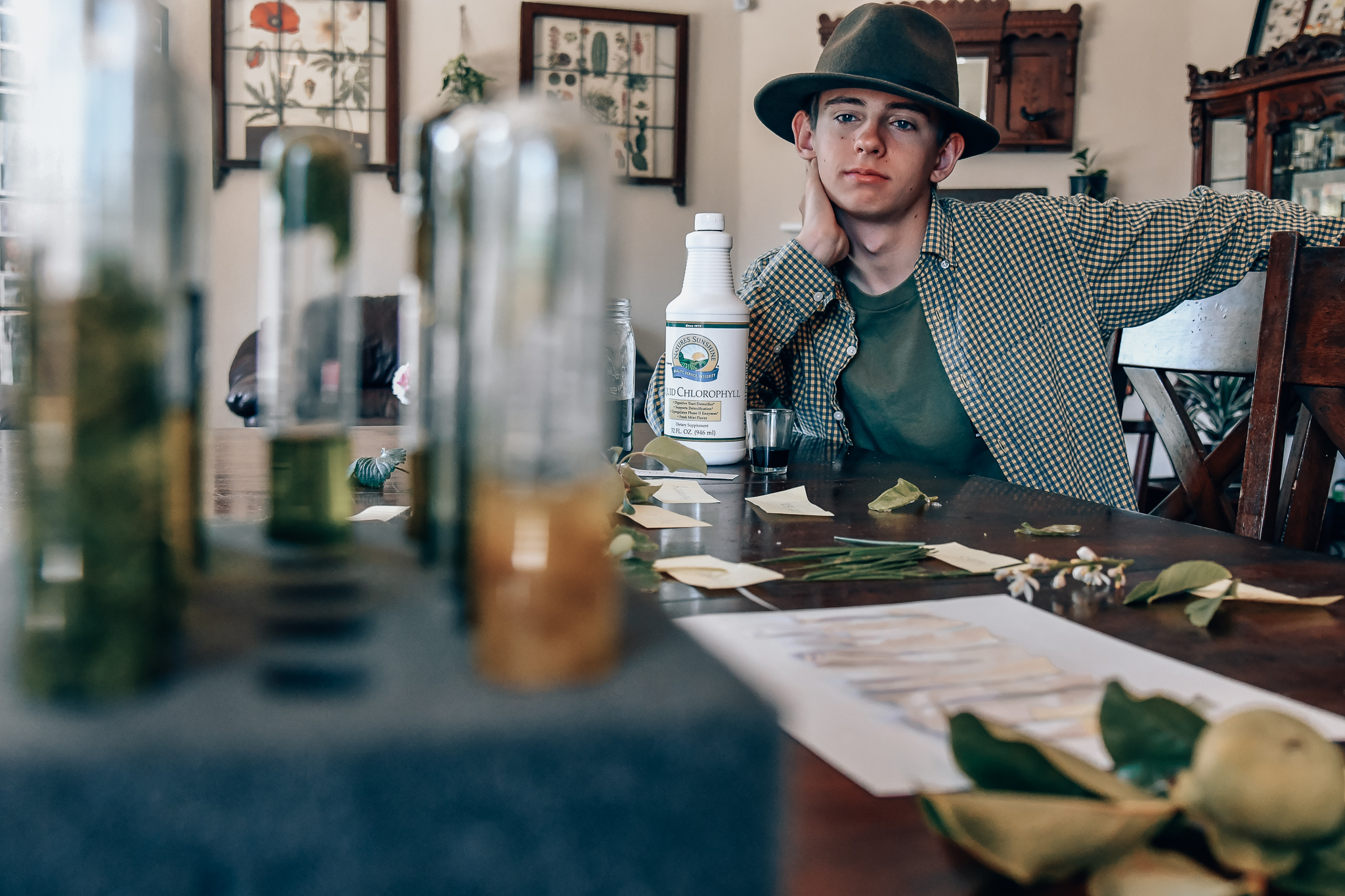
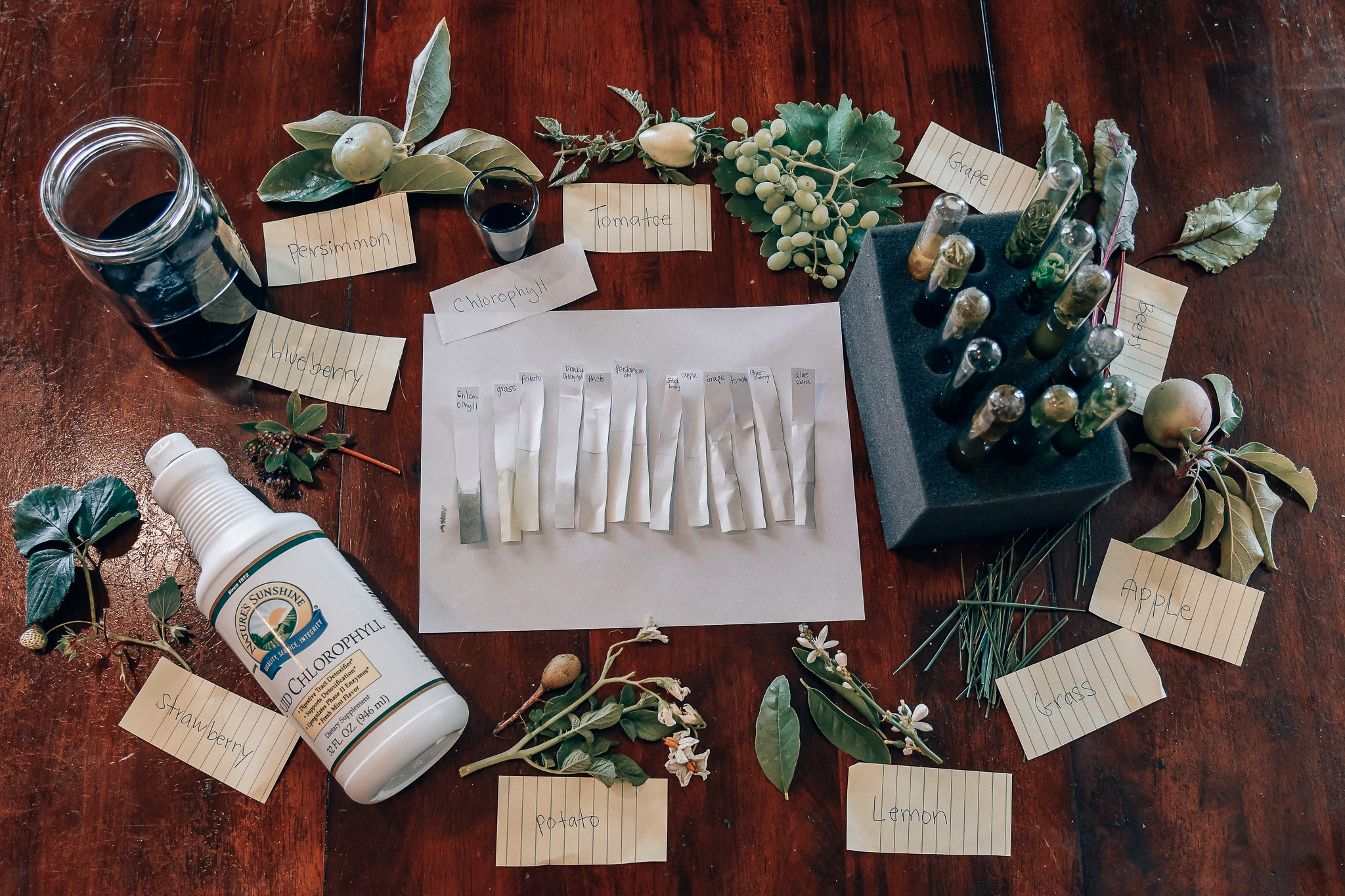
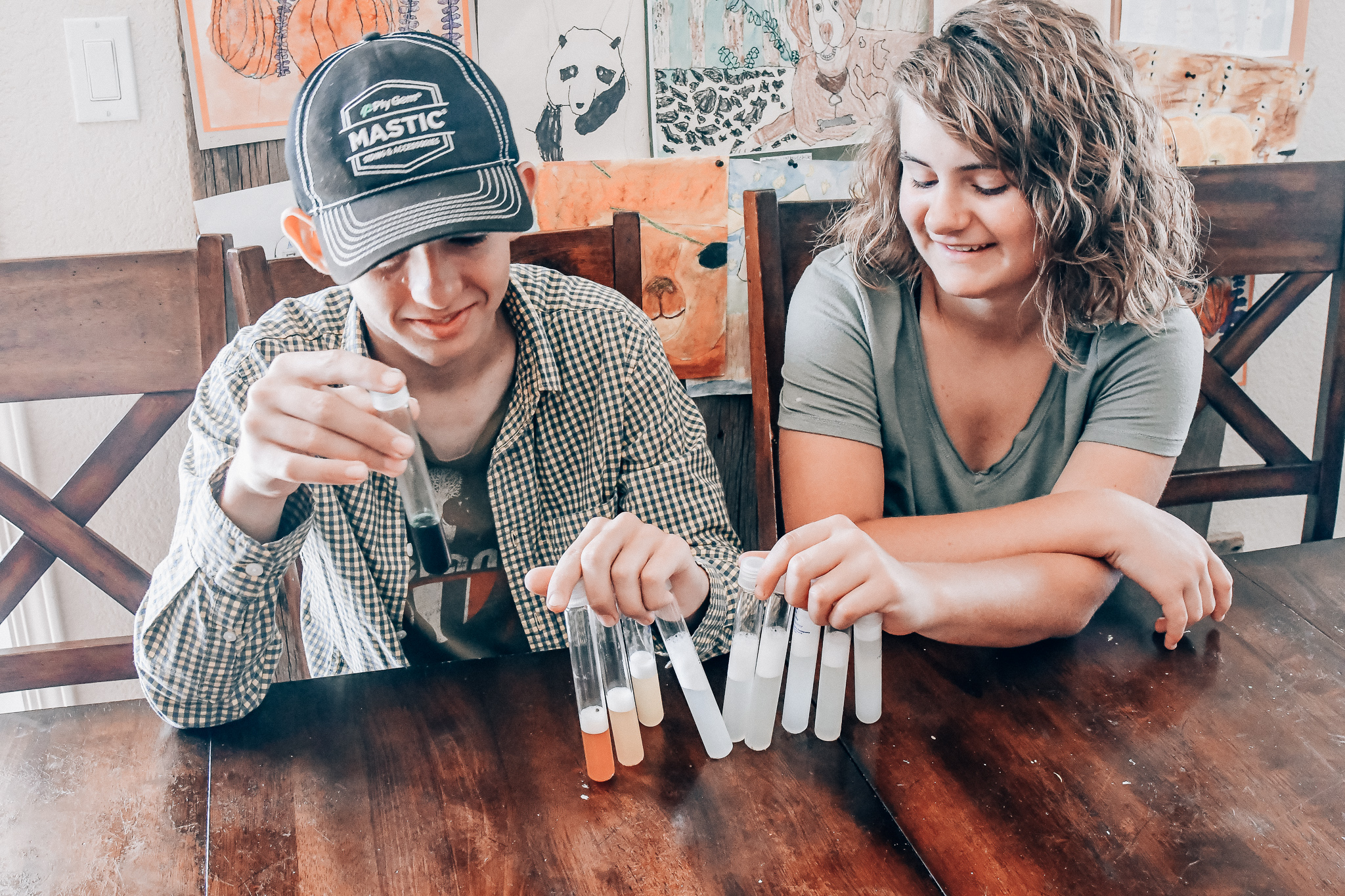
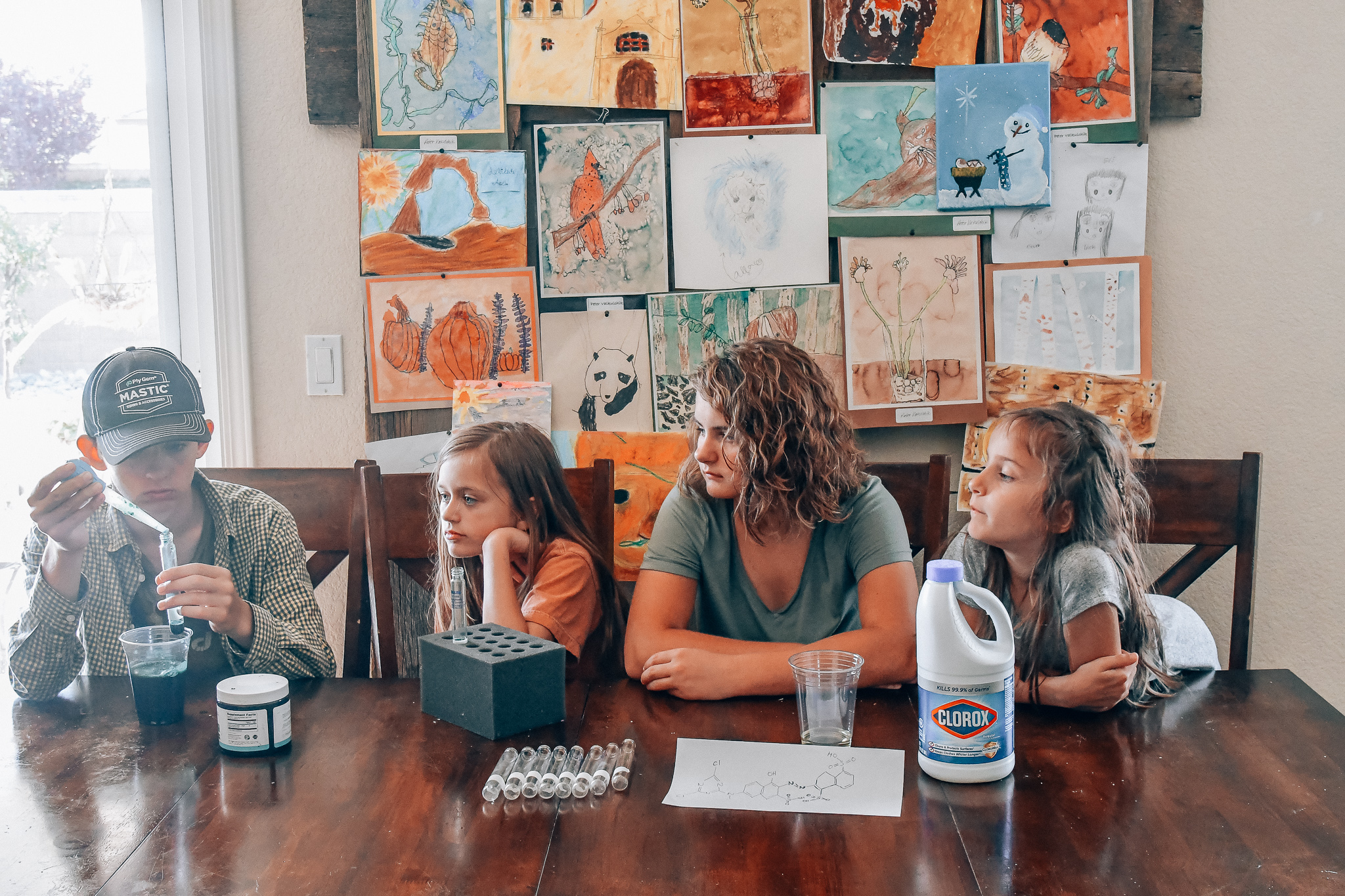
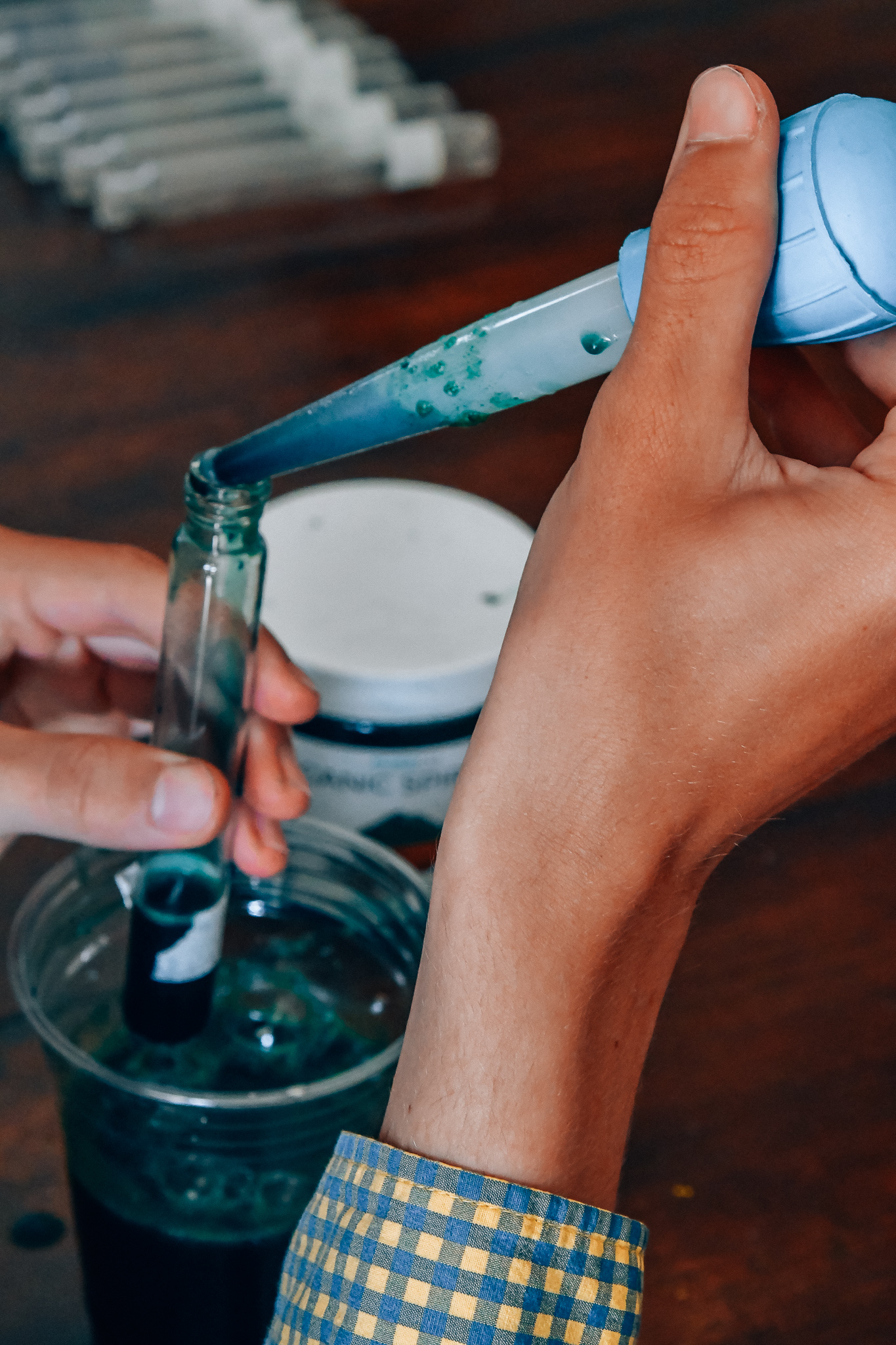
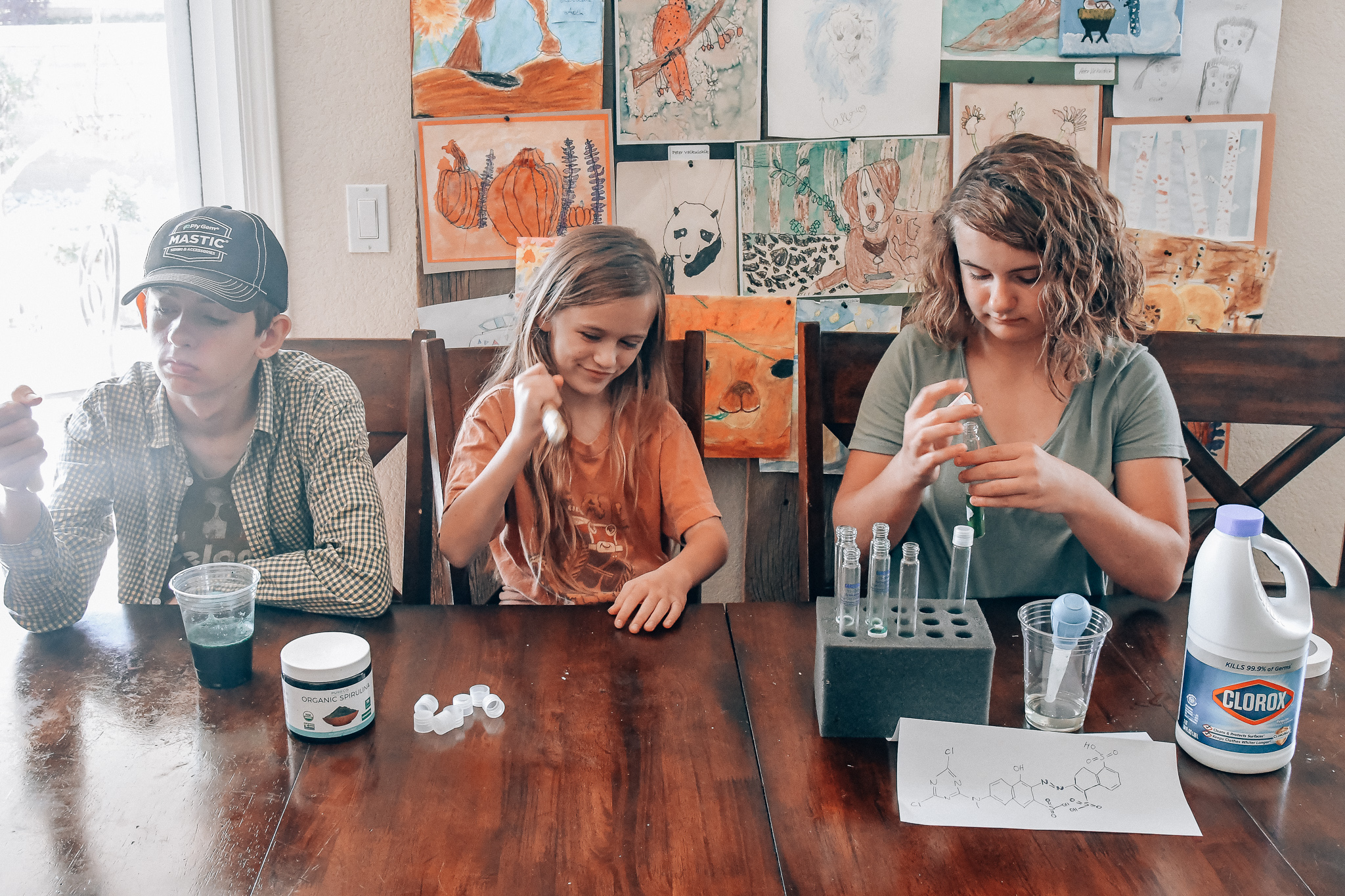
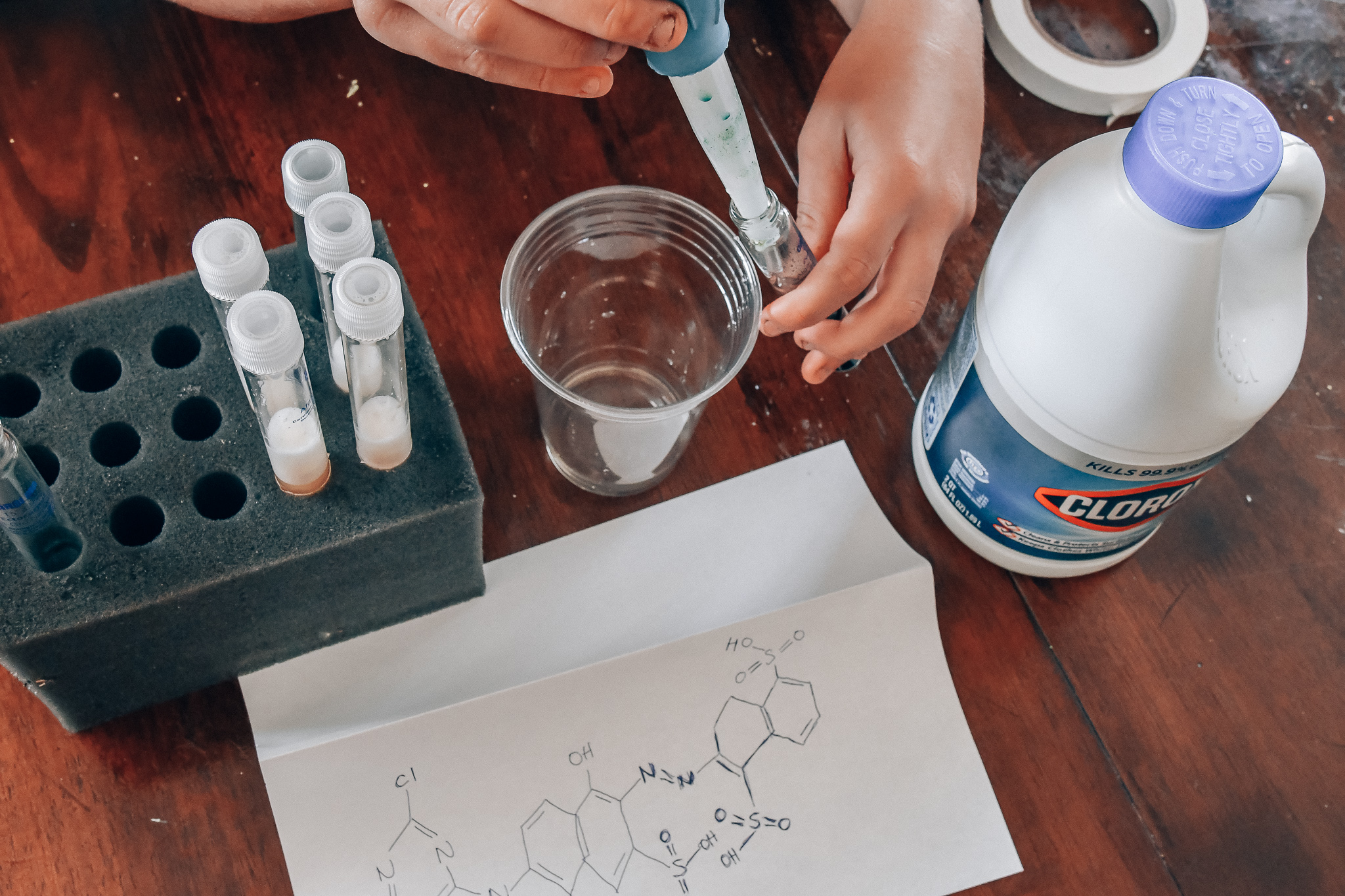
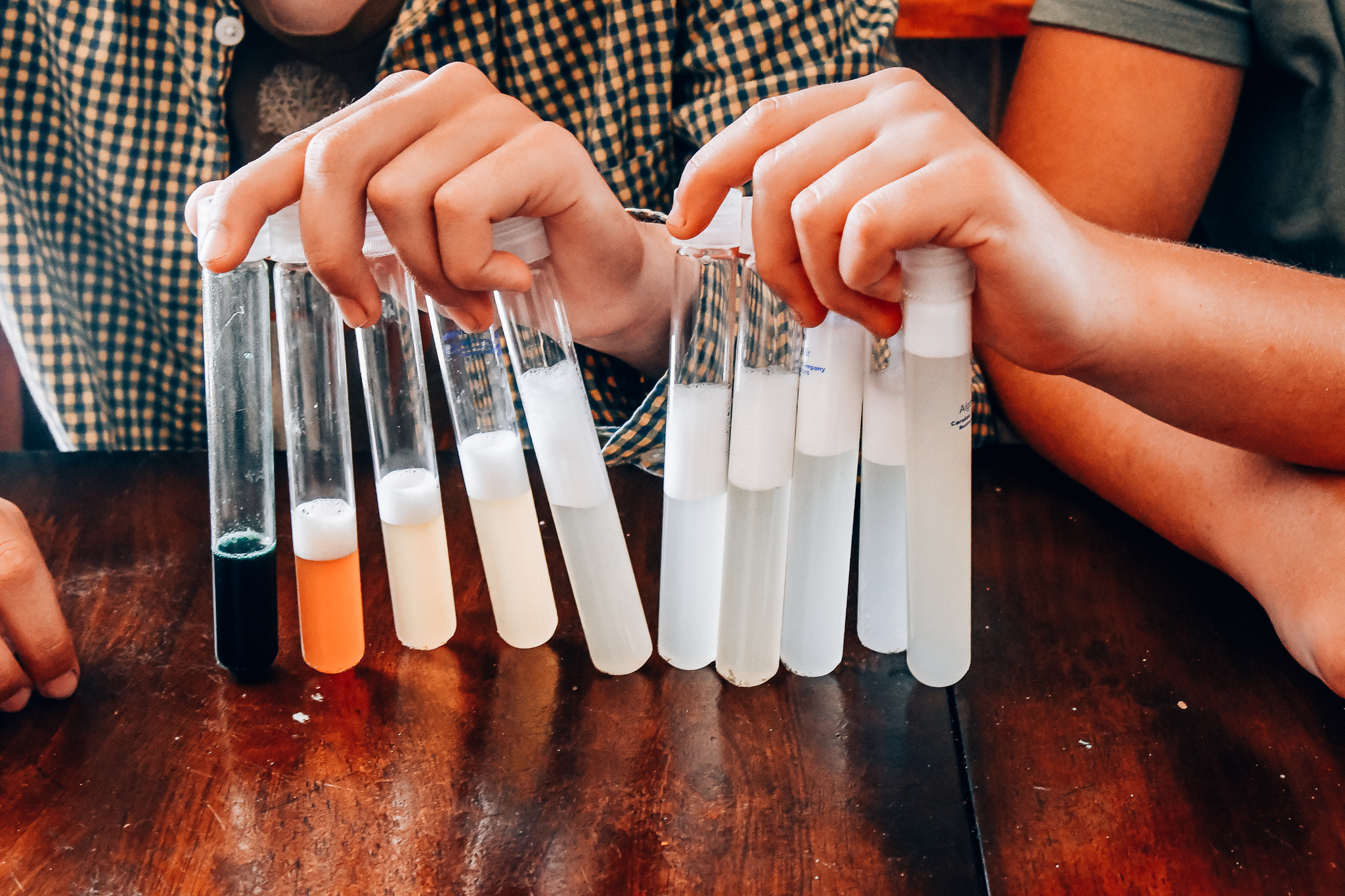
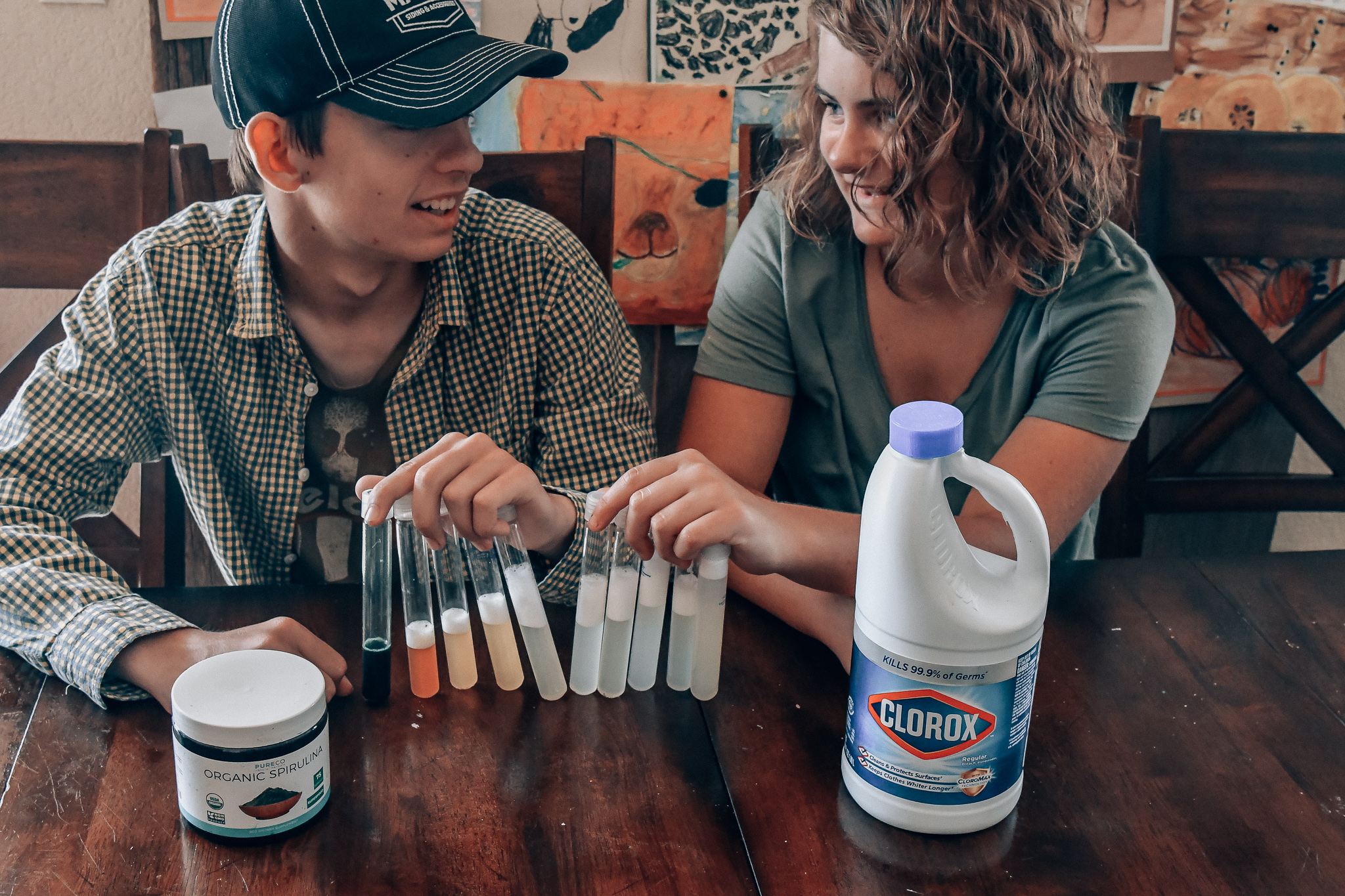
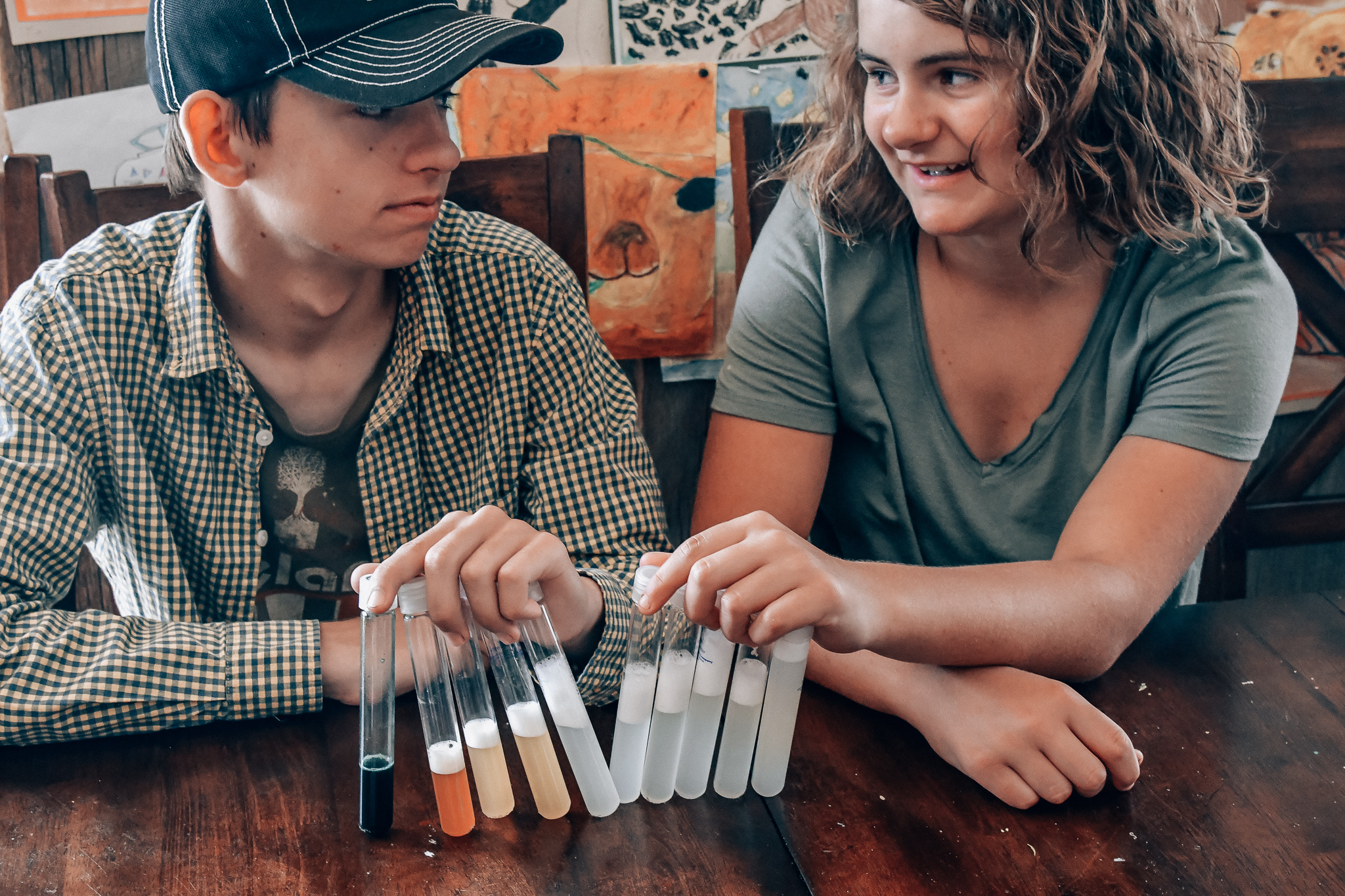
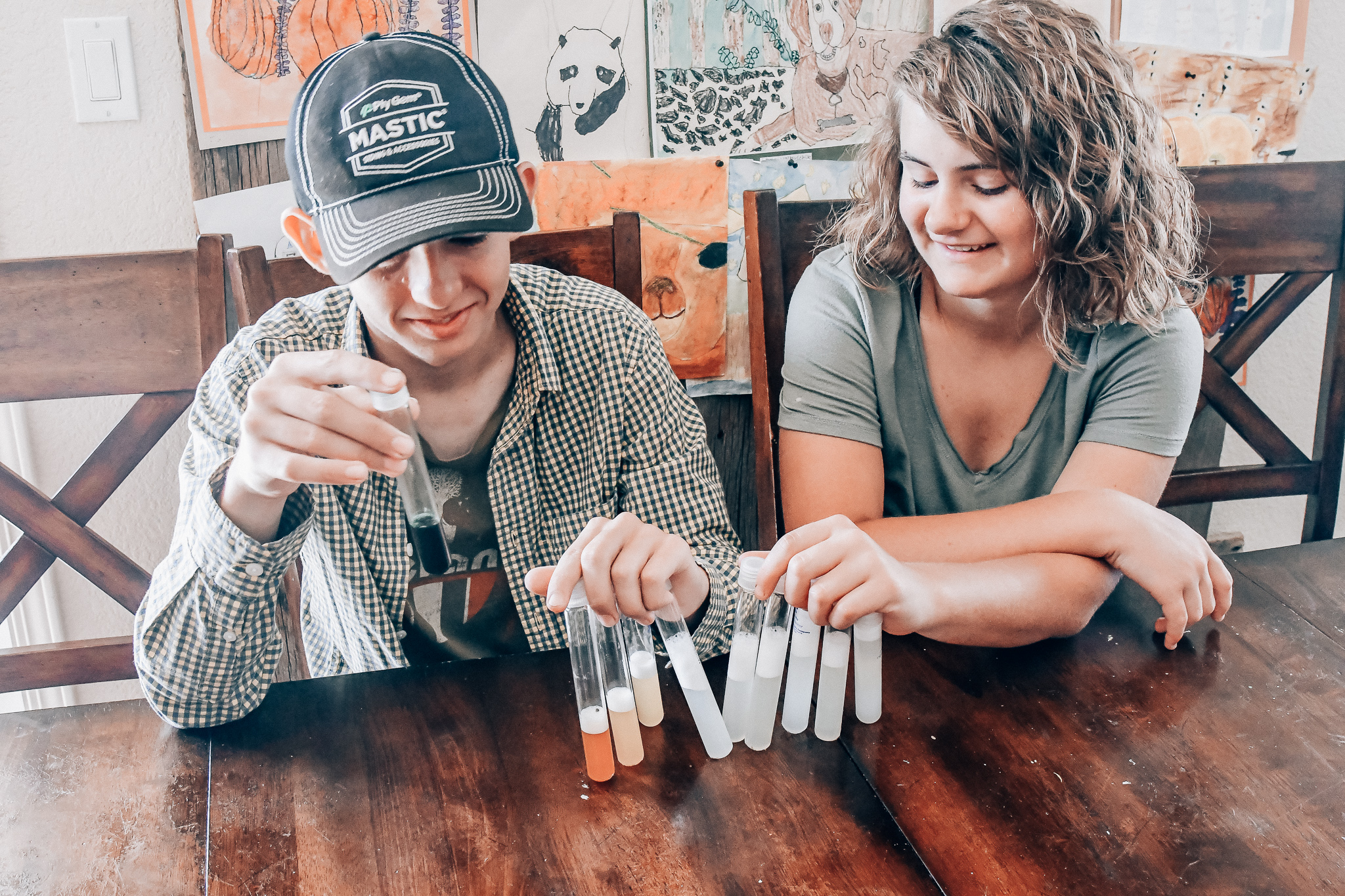
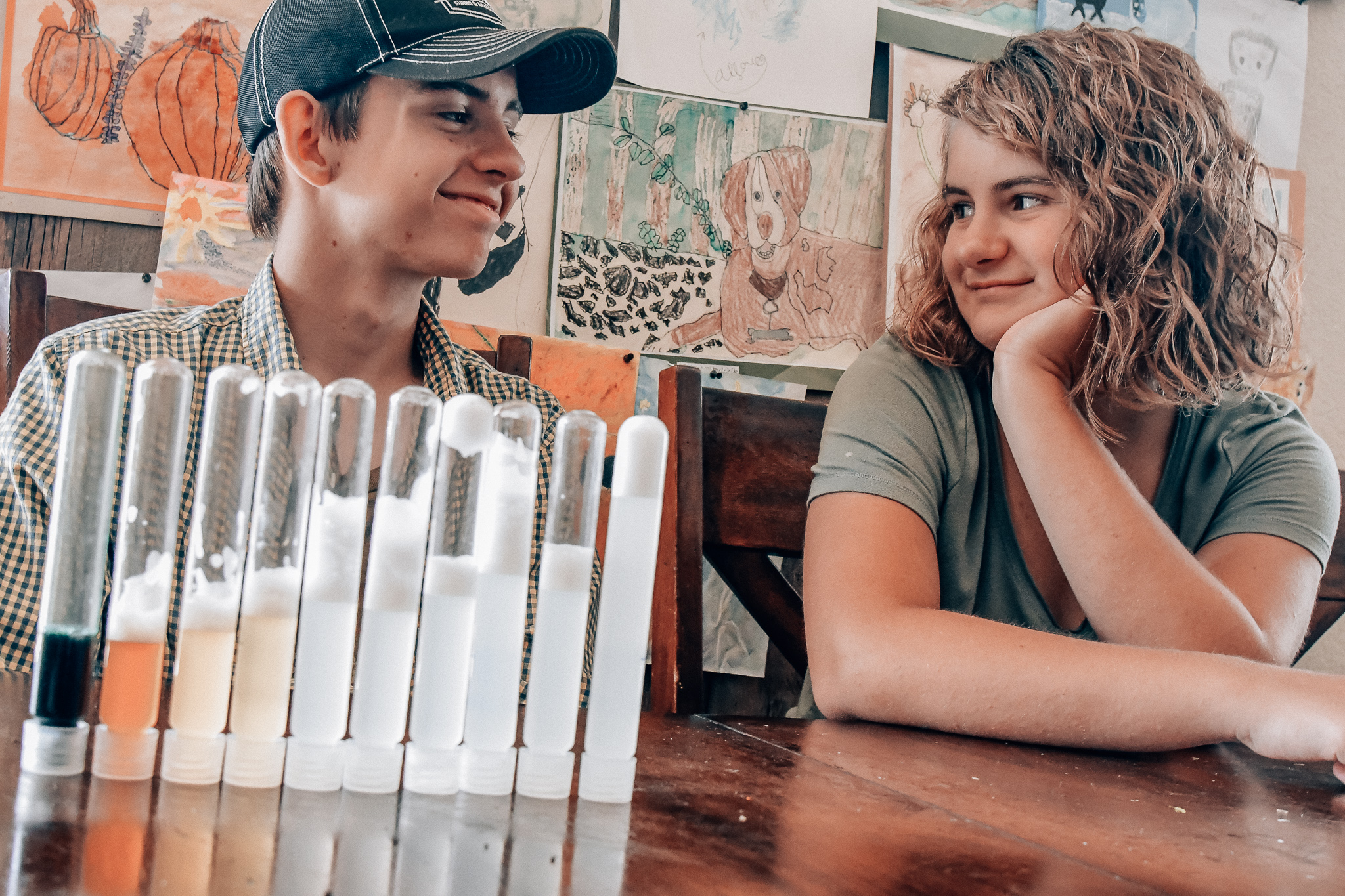
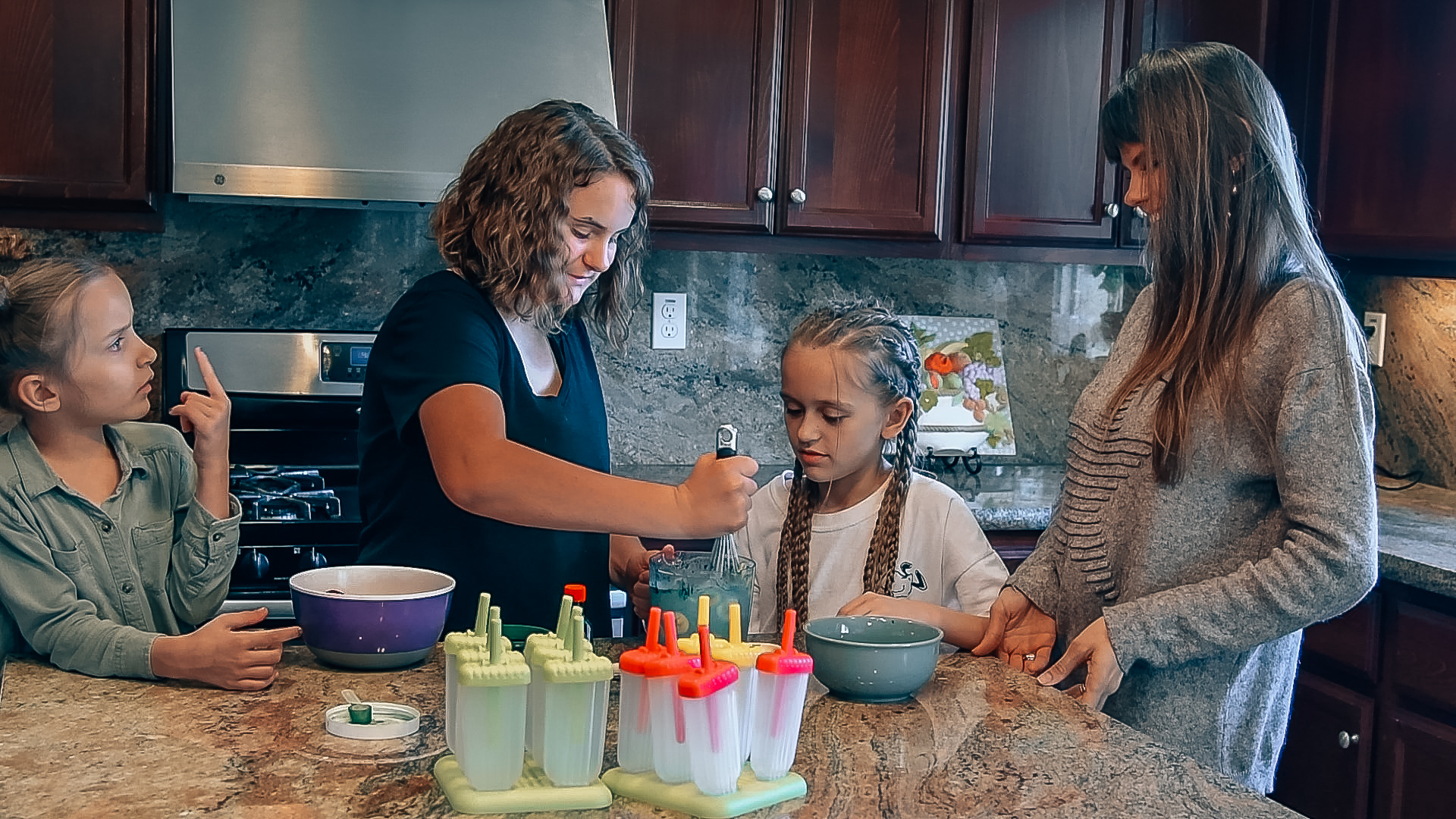
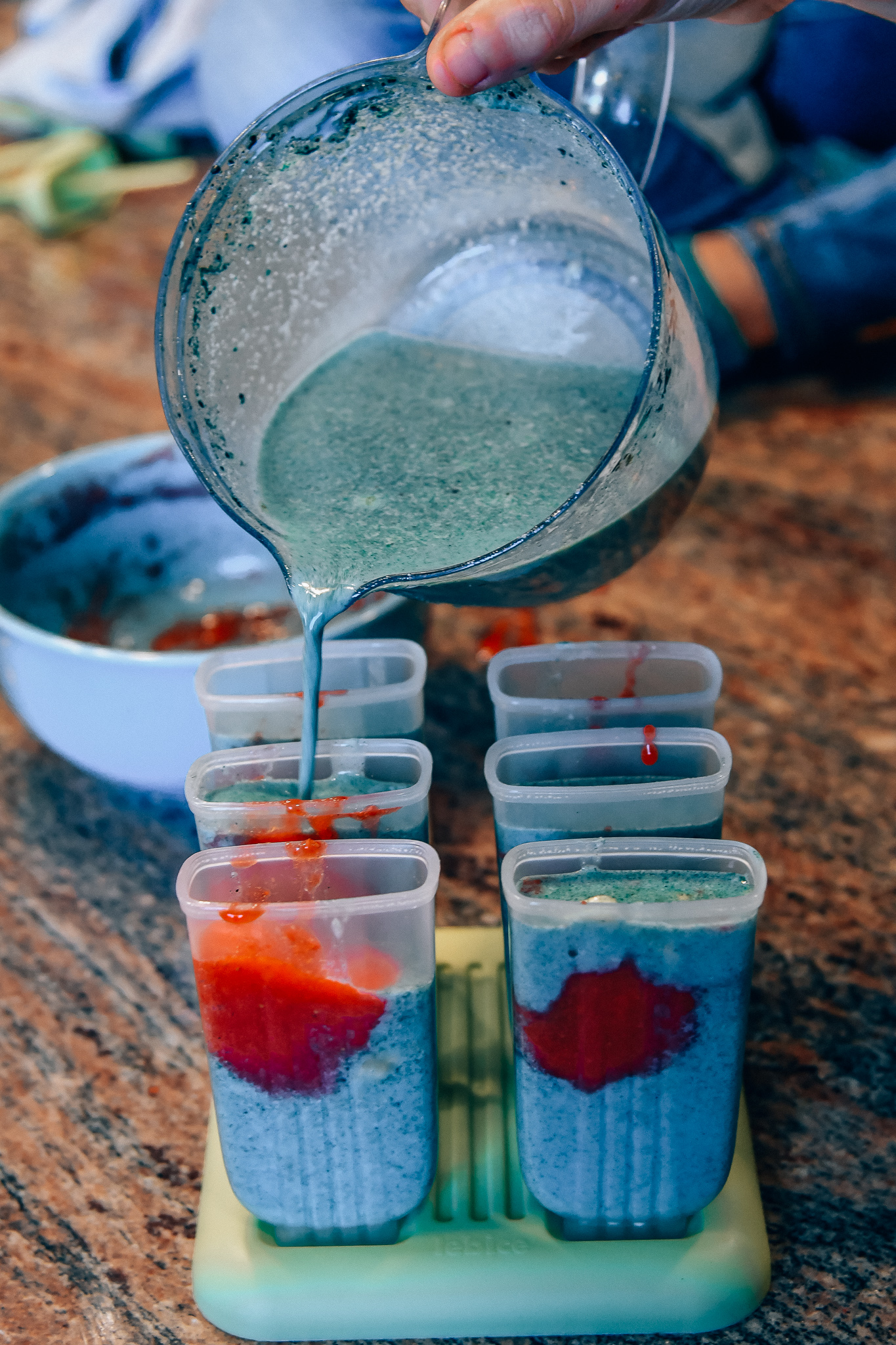
christina leslie davis
Hi where did you get the test tubes and labels?
Homegrown Adventures
I got it at Carolina…https://www.carolina.com/algae/marine-algae-set-living/151540.pr?question=algae